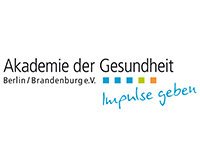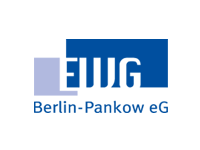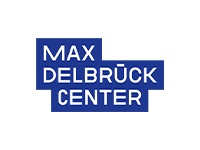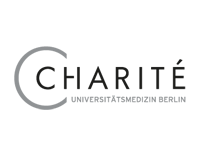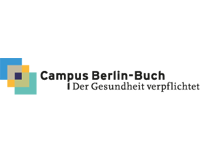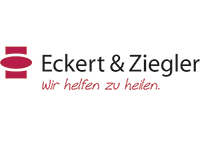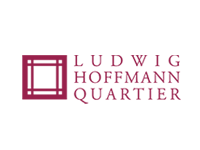News
Innovation / 13.11.2025
Eckert & Ziegler Achieves Further Earnings Growth and Double-Digit Sales Growth in the Medical Segment
Eckert & Ziegler SE (ISIN DE0005659700, TecDAX) increased sales in the first nine months of 2025 by 4% to €224.1 million compared to the same period last year. EBIT before special items from continuing operations (adjusted EBIT) rose by 9% to €50.8 million. Net profit (from continuing and discontinued operations) grew by 28% to €29.9 million, or €0.48 per share.
In the Medical segment, sales in the first nine months of the year amounted to €119.7 million, up around €15.2 million or 15% on the previous year's level. The business with pharmaceutical radioisotopes remains the most important source of revenue. Particularly noteworthy here are the developments in sales of generators, licensing, and contract manufacturing & development (CDMO).
The Isotope Products segment generated external sales of €104.4 million, down €6.6 million or approximately 6% compared to the first nine months of the previous year. Shifts between product groups toward lower-margin products have become apparent in comparison to the same period last year.
For the current fiscal year 2025, the Executive Board confirms its profit forecast published on March 27, 2025, with sales of approx. €320 million and an adjusted EBIT of approx. €78 million.
The complete quarterly report can be viewed here:https://www.ezag.com/Q32025en
3rd quarter of 2025:
- Sales of €75.3 million (previous year: €70.1 million)
- EBIT before special items of €15.4 million (previous year: €14.2 million)
- Net income of €8.5 million (previous year: €5.3 million)
First 9 months of 2025:
- Sales of €224.1 million (previous year: €215.5 million)
- EBIT before special items of €50.8 million (previous year: €46.7 million)
- Net income of €29.9 million (previous year: €23.4 million)
Forecast for 2025:
- Sales of approx. €320 million (confirmed)
- EBIT before special items of approx. €78 million (confirmed)
About Eckert & Ziegler.
Eckert & Ziegler SE, with more than 1.000 employees, is a leading specialist for isotope-related components in nuclear medicine and radiation therapy. The company offers a broad range of services and products for the radiopharmaceutical industry, from early development work to contract manufacturing and distribution. Eckert & Ziegler shares (ISIN DE0005659700) are listed in the TecDAX index of Deutsche Börse.
Source: Press Release Eckert & Ziegler
Eckert & Ziegler Achieves Further Earnings Growth and Double-Digit Sales Growth in the Medical Segment
Innovation / 07.11.2025
T-knife Therapeutics Presents Preclinical Data on PRAME-Targeted TK-6302 Highlighting its Potential as a Promising, Category-leading Therapy
– Comprehensive TK-6302 data demonstrate preclinical efficacy and safety, supporting clinical readiness, alongside established scalable manufacturing
– TK-6302 Clinical Trial Application planned in Q4 2025 for initiation of the Phase 1 ATLAS trial in 2026
San Francisco, CA and Berlin, Germany – November 7, 2025 - T-knife Therapeutics, Inc., a biopharmaceutical company developing T cell receptor (TCR) engineered T cell therapies (TCR-T) to fight cancer, today announced multiple presentations on TK-6302 were featured at the Society for Immunotherapy of Cancer (SITC) Annual Meeting. TK-6302 is a differentiated, PRAME-targeted TCR-T that incorporates leading innovations, including a high-affinity TCR, a chimeric CD8 co-receptor that engages CD4 T cells and provides co-stimulation upon TCR engagement, and a FAS checkpoint converter that boosts T cell fitness and survival.
“We have conducted numerous preclinical studies evaluating TK-6302, our supercharged PRAME targeting TCR-T,” stated Peggy Sotiropoulou, Ph.D., Chief Scientific Officer of T-knife. “The competitively differentiated and consistent performance demonstrated across all analyses positions us with confidence as we prepare for the initiation of the ATLAS Phase 1 clinical trial. With the totality of the data, we have demonstrated preclinically that TK-6302 shows best-in-class anti-tumor efficacy and T cell fitness compared to peer company PRAME TCR-T approaches. Additionally, we have established our clinical manufacturing process with scalable production to support clinical development.”
Data Overview
A poster titled “Analysis of PRAME in advanced/metastatic solid tumors shows homogeneous expression and stability between lesions, across treatment lines, and upon exposure to checkpoint inhibitors” (Abstract 27) demonstrated that PRAME is expressed in multiple solid tumors and minimally present in healthy tissues, supporting its potential as a therapeutic target capable of driving deep, durable responses with a low risk of antigen-negative relapse.
A poster titled “TK-6302, a supercharged PRAME TCR-T cell therapy containing a high affinity TCR, a costimulatory CD8 coreceptor and a FAS-based switch receptor, demonstrates preclinical safety and efficacy,” (abstract 329) showcased preclinical studies demonstrating the anti-tumor activity, polyfunctionality, T cell fitness and favorable safety profile of TK-6302. TK-6302’s multi-mechanistic mode of action was further characterized through key observations:
- Supercharged PRAME CD4 and CD8 T cells directly kill tumor cells via the high-affinity TCR and chimeric CD8 co-receptor that engages CD4 T cells and provides co-stimulation upon TCR engagement (co-stim CD8 CoR).
- Supercharged PRAME CD4 T cells secrete cytokines to support CD8 T cell function and trigger global immune responses by recruiting and activating other immune cells, driving tumor control through antigen spreading, beyond HLA and target constraints.
- The co-stim CD8 CoR mediates TCR-T fitness and durable functional activity through optimal co-stimulation.
- The FAS-TNFR checkpoint converter enhances TCR-T cell engraftment and persistence via activation in the lymph nodes and prevention of FAS-L induced cell death in the tumor.
A poster titled “In-depth characterization of TK-6302, a supercharged PRAME TCR-T therapy, manufactured at-scale from healthy donors and patients,” (abstract 347) presented data demonstrating potent anti-tumor activity of TK-6302 across multiple assays, including physiologically relevant 3D tumor models that mimic solid tumor barriers, with high yield manufacturing performance. Additionally, transcriptomic profiling at harvest and following co-culture with cancer cells revealed a TK-6302 gene expression signature consistent with broad immune activation, enhanced tumor homing and sustained T cell fitness.
A poster titled “Preclinical assessment of genome editing safety in CRISPR-engineered PRAME-targeting TK-6302 TCR-T cells demonstrates editing precision and safety,” (abstract 330) reviewed comprehensive analyses of TK-6302 drug products manufactured at-scale with the clinical process, which showed high editing precision with full and correct integration of the transgene, and without concerning off-target or chromosomal aberrations.
Copies of the poster presentations can be found at: https://www.t-knife.com/technology/scientific-publications.
About T-knife Therapeutics
T-knife is a biopharmaceutical company dedicated to developing T cell receptor (TCR) engineered T cell therapies (TCR-Ts) to deliver broad, deep and durable responses to solid tumor cancer patients. The company’s unique approach leverages its proprietary platforms and synthetic biology capabilities to design the next-generation of supercharged TCR-Ts with best-in-class potential.
The company’s lead program, TK-6302, is a supercharged PRAME targeting TCR-T that includes novel enhancements to improve T cell fitness and persistence, to overcome the immunosuppressive tumor micro-environment, and to improve durability of response. The company plans to submit a Clinical Trial Application (CTA) in Q4 2025 and to initiate the ATLAS Phase 1 clinical trial of TK-6302 in 2026.
T-knife was founded by leading T cell and immunology experts utilizing technology developed at the Max Delbrück Center for Molecular Medicine together with Charité – Universitätsmedizin Berlin, is led by an experienced management team, and is supported by a leading group of international investors, including Andera Partners, EQT Life Sciences, RA Capital Management and Versant Ventures. For additional information, please visit the company’s website at www.t-knife.com.
Research / 21.10.2025
Why APOE4 raises Alzheimer’s risk
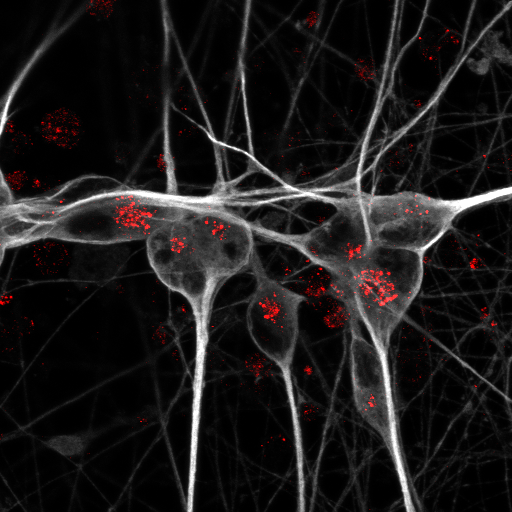
Researchers at the Max Delbrück Center and Aarhus University have found a mechanism through which the gene variant APOE4, long linked to a high risk of developing Alzheimer’s disease, impairs neuronal function in the aging brain. The research was published in “Nature Metabolism.”
The gene variant APOE4 has long been known as the strongest genetic risk factor for late-onset Alzheimer’s disease, raising the risk about twelve-fold as compared to non-carriers. Yet its close relative, APOE3 – the most common variant in humans – does not appear to increase susceptibility to the disease. The reason for this stark difference has been unclear.
Now, a study published in “Nature Metabolism” may explain the mechanism: Neurons exposed to APOE3 protein can use long-chain fatty acids as an alternative source of energy when glucose is scarce. But this vital metabolic pathway is blocked in the APOE4 brain.
“The ability to use glucose diminishes in the aging brain, forcing nerve cells to use alternative sources for energy production,” explains Professor Thomas Willnow, Group Leader of the Molecular Cardiovascular Research lab at the Max Delbrück Center and senior author of the paper. Willnow also holds a professorship in the Department of Biomedicine at Aarhus University. “APOE4 appears to block nerve cells from utilizing lipids as an alternative energy source when their supply of glucose decreases.”
Experiments in mice and human neurons
The brain consumes around a fifth of the body’s glucose supply. Yet as we age, its ability to metabolize glucose drops. This decline is a hallmark of both normal aging and Alzheimer’s disease, and starts decades before symptoms of dementia become apparent.
ApoE, the protein encoded by the APOE gene, belongs to a family of fat-binding proteins, called apolipoproteins. In the central nervous system, ApoE is mainly released by brain cells called astrocytes. It helps to deliver lipids to nerve cells.
To understand why the APOE4 variant so dramatically raises the risk of Alzheimer’s disease compared to APOE3, co-first authors Dr. Anna Greda, assistant professor at the Willnow lab at Aarhus University, and Dr. Jemila Gomes, who did her PhD in Aarhus and is now a postdoc in the Willnow lab in Berlin, collaborated with the Technology Platforms for Pluripotent Stem Cells and Electron Microscopy at the Max Delbrück Center. They used genetically engineered mice that carry human APOE3 or APOE4 genes. They found that APOE3 interacts with a receptor called sortilin to deliver fatty acids into neurons. By contrast, APOE4 disrupts sortilin’s function, preventing uptake of lipids by neurons.
To confirm the relevance of their findings for human brain health, the scientists then turned to human stem cell-derived neurons and astrocytes carrying different APOE variants. Again, they observed that APOE3 allowed neurons to metabolize long-chain fatty acids, while the presence of APOE4 shut down this ability.
“By using transgenic mouse models and stem-cell-derived human brain cell models, we discovered that the pathway enabling nerve cells to burn lipids for energy production doesn’t work with APOE4, because this APOE variant blocks the receptor on nerve cells required for lipid uptake,” explains Greda.
New treatments for Alzheimer’s
“Our research suggests that the brain is highly dependent on being able to switch from glucose to lipids as we age. It seems that individuals, who are carriers of the APOE4 gene, may be compromised to do so, increasing their risk of nerve cell starvation and death during aging,” Gomes adds. Still, “this work opens new avenues for interventions that could improve lipid-based energy use in APOE4 carriers.”
There are already marketed drugs that specifically target the body’s ability to utilize lipids, Willnow says. Such drugs can now be studied for their potential to treat people with APOE4. As a proof, the researchers showed that treating neurons with the drug bezafibrate restored fatty acid metabolism in APOE4-expressing cells. Of course, such drugs need to be tested in clinical trials, Willnow adds, “but I am hopeful that our research suggests new treatment options for this devasting disease.”
Text: Gunjan Sinha / Vibe Bregendahl Noordeloos, Aarhus University
Research / 17.10.2025
A potential new drug for stiff hearts
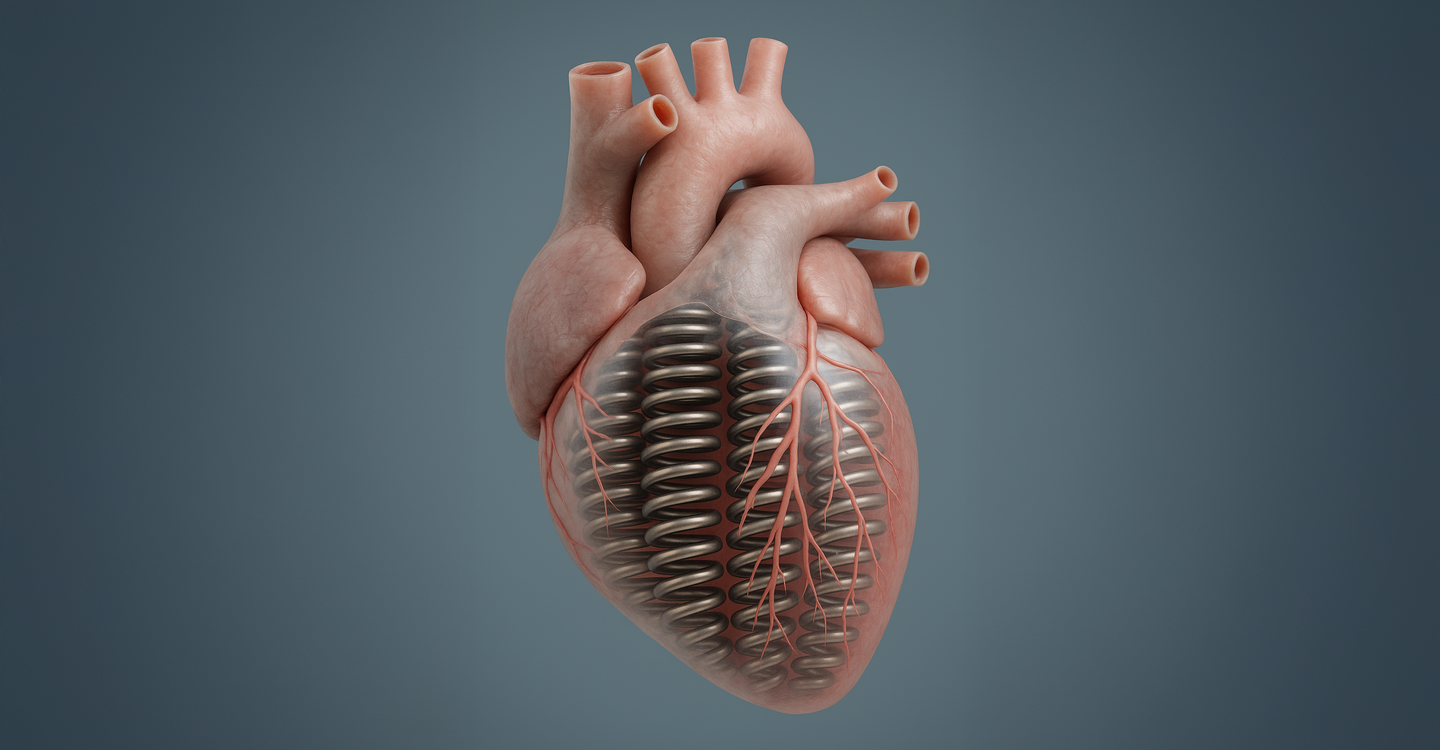
Michael Gotthardt at the Max Delbrück Center and collaborators are developing a drug to treat a common type of heart failure characterized by impaired cardiac filling. In “Cardiovascular Research,” his group and a US team showed the therapy improves cardiac function in a mouse model of the disease.
As we age, our muscles tend to stiffen, including one of the most vital muscles in our bodies: the heart. This is why older adults often suffer from a specific type of heart failure whereby the organ continues to pump blood, but becomes too stiff to relax and to fully fill between beats.
“There’s currently no effective medication that lowers mortality in this form of heart failure – heart failure with preserved ejection fraction, or HFpEF,” says Professor Michael Gotthardt, Group Leader of the Translational Cardiology and Functional Genomics lab at the Max Delbrück Center in Berlin. For more than a decade, Gotthardt’s research has focused on uncovering the molecular mechanisms of HFpEF and developing therapeutic strategies to counteract them.
In the journal “Cardiovascular Research,” he and a team led by Professor Henk Granzier from the College of Medicine, Tucson at the University of Arizona – a longtime collaborator – report that a drug they developed, called RBM20-ASO, improves heart muscle elasticity and cardiac filling in a mouse model that better reproduces the multifactorial pathology of human HFpEF than any previously established model. “After treatment with RBM20-ASO, the mice’s hearts were markedly more compliant and capable of expanding and filling with blood after contracting,” Gotthardt explains.
Elastic forms of the protein titin
“Most people with HFpEF have comorbid conditions such as obesity, high blood pressure, elevated blood lipids or high blood sugar,” says Dr. Mei Methawasin, first author of the study who now leads her own group at the University of Missouri at Columbia. “For the first time, we tested the drug in mice that not only developed HFpEF, but also had these comorbidities – to better simulate the human disease.”
The drug is an antisense oligonucleotide (ASO) – a short, single-stranded nucleic acid molecule designed to reduce the amount, and therefore the activity, of the splicing regulator RBM20. This factor plays a critical role in determining whether heart muscle cells produce a more elastic or stiffer version of the giant protein titin, which functions as a molecular spring in cardiac muscle. Gotthardt and colleagues had previously demonstrated that RBM20-ASO prompts heart cells to express more of the elastic titin variant – similar to what’s seen in very young hearts – completely reversing HFpEF-like symptoms in genetic animal models of the disease.
High doses not required
“The current study also aimed to determine the optimal dose of the drug to minimize side effects, including immune system disturbances,” says Methawasin. The team found that reducing RBM20 levels by about half was enough to improve the heart's diastolic function – its ability to fill with blood – without impairing its pumping strength, or systolic function.
“Our treatment significantly reduced left ventricular stiffness and abnormal thickening of the heart muscle, even in the presence of persistent comorbidities,” adds Gotthardt. Moreover, side effects in treated animals were moderate. The researchers believe they can reduce these effects even further by increasing the dosing interval – an approach they plan to test in future studies.
“Our results suggest that using ASOs to modulate RBM20 protein levels could be a viable alternative or complementary therapy for HFpEF – one capable of restoring diastolic function and limiting further organ damage, either as a standalone or adjunctive treatment” says Gotthardt. Supported by the Deutsches Zentrum für Herz-Kreislauf-Forschung and the German Research Foundation, he is planning to bring this treatment to HFpEF patients in collaboration with colleagues from the Deutsches Herzzentrum der Charité in Berlin. Before clinical translation, however, the therapeutic strategy will undergo further evaluation in a porcine model to validate its safety and efficacy.
Text: Anke Brodmerkel
Source: Press Release Max Delbrück Center
A potential new drug for stiff hearts
Research / 23.09.2025
Volker Haucke receives the Ernst Schering Prize 2025
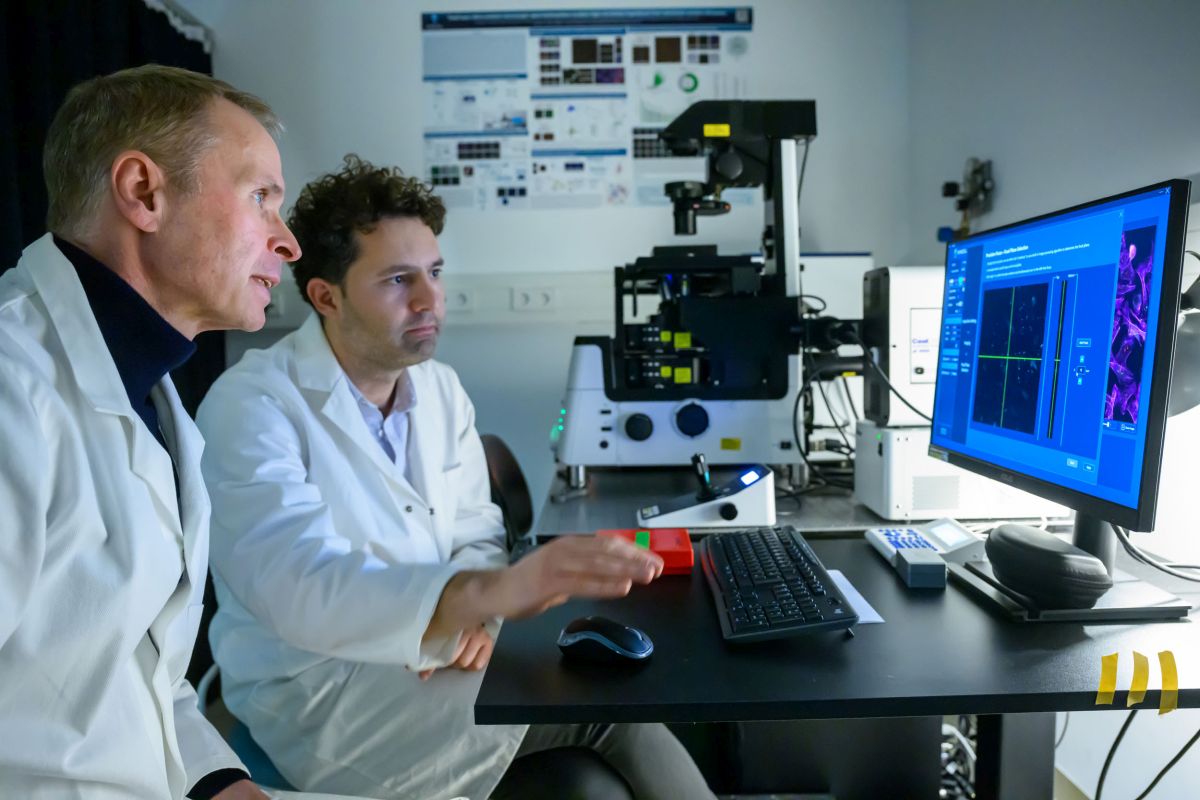
The Ernst Schering Prize 2025, endowed with 50.000 euros, is awarded to Prof. Dr. Volker Haucke, Director at the Leibniz-Forschungsinstitut für Molekulare Pharmakologie (FMP) and Professor of Molecular Pharmacology at Freie Universität Berlin.This prestigious science award honors his groundbreaking discoveries on the function of signaling lipids, which control the cellular responses to messengers, hormones, and nutrients, thereby shaping central processes in cell communication.
Dysfunctions in lipid signaling are associated with a wide range of diseases—from stroke to neurodegeneration and cancer. Prof. Haucke’s research thus provides critical biomedical insights of far-reaching clinical relevance. From numerous remarkable nominations, an international jury selected him for this award.
At the core of Haucke’s scientific work lies the role of membrane lipids, known as phosphoinositides. Acting as molecular switches, they regulate the transport of messengers and cellular components. His pioneering studies on vesicle transport and neuronal signaling have fundamentally advanced our understanding of cellular communication in the brain.
A systems biology perspective on diseases
Prof. Haucke emphasizes the importance of a systems biology perspective for biomedical progress: “Those who seek biomedical progress must not be content with simple causal chains.” Different diseases may be rooted in the same cellular mechanisms, even if triggered by distinct genes. “If we understand these common mechanisms, drugs that are already approved could prove effective for other diseases as well—faster, more targeted, and with lower risk.” In neuroscience in particular, this approach opens up new perspectives on complex disorders such as Alzheimer’s, Parkinson’s, and rare genetic diseases.
Beyond theory, Prof. Haucke and his team are also making practical progress. They have developed novel compounds that specifically influence key processes such as cell division and blood clotting. These discoveries open up promising therapeutic options, particularly in the fields of cancer and vascular medicine.
“Through his discoveries, Prof. Volker Haucke has not only revolutionized our understanding of cellular mechanisms, but also paved the way for innovative therapeutic approaches in medicine,” says Prof. Max Löhning, Chairman of the Foundation Council. “He is an outstanding example of how basic research can translate into societal impact.”
New perspectives on the brain
Prof. Dr. Detlev Ganten, Founding Director of the Virchow Foundation and nominator for the prize, highlights one aspect in particular: “Among Volker Haucke’s many important research findinmgs, I am especially fascinated by his findings on the question: What makes the brain a thinking organ? Each of the 100 billion neuronal cells in the human brain has 7,000 points of contact (synapses) to other, far-distant neuronal cells. Volker Haucke has discovered that this extensive synaptic network in the brain is created by signaling lipids that make intelligent, networked thinking possible in the first place.”
The Ernst Schering Prize is awarded annually by the Schering Foundation and honors outstanding scientists worldwide whose groundbreaking research has generated new inspiring models or led to fundamental shifts in biomedical knowledge. Previous laureates include Nobel laureates Christiane Nüsslein-Volhard, David MacMillan, Carolyn Bertozzi, and Svante Pääbo.
Dr. Jörg Maxton-Küchenmeister, Managing Director of the Schering Foundation, emphasizes: “Through his pioneering work on lipid signaling, Prof. Volker Haucke has fundamentally transformed our understanding of key cell processes and opened up new pathways to treating major diseases such as cancer or neurodegenerative disorders. Moreover, his commitment to sustainable lab work deserves special recognition.”
With the Ernst Schering Prize 2025, Prof. Haucke receives a significant recognition of his outstanding scientific achievements and his contribution to advancing the frontiers of biomedical research. The award ceremony will take place on 24 November 2025 in Berlin.
Innovation / 20.09.2025
Eckert & Ziegler Gains Approval for GalliaPharm® in Japan
Eckert & Ziegler Radiopharma GmbH (Eckert & Ziegler), a leading provider of isotope technology for nuclear medicine and radiopharmaceutical applications, has received marketing authorization in Japan from Japan’s Ministry of Health, Labour and Welfare (MHLW) for its GalliaPharm® 68Ge/68Ga Radionuclide Generator, through Novartis Pharma K.K. which will oversee product distribution and safety information management as the Designated Marketing Authorization Holder for GalliaPharm® in Japan.
This authorization opens the door for broader use of Gallium-68–based diagnostics in Japan through the clinical use of the Novartis kit Locametz® for radiopharmaceutical preparation of 68Ga-PSMA-11, which has also been granted approval.
GalliaPharm® is an established GMP-grade generator for Gallium-68, used internationally in the preparation of radiopharmaceuticals for positron emission tomography (PET) imaging, particularly in enabling PSMA imaging for prostate cancer detection. With the approval now in place, healthcare providers in Japan will be able to access a dependable and proven tool for producing Gallium-68 radiopharmaceuticals, supporting more precise imaging and potentially facilitating earlier diagnosis.
“This regulatory clearance marks a significant step for our medical division,” said Dr. Deljana Werner, Global Director Quality and Regulatory Affairs for the Medical Division of Eckert & Ziegler SE. “Introducing GalliaPharm® to Japan means we can equip local nuclear medicine specialists with the same high-quality generator technology that has supported diagnostic imaging advancements in many other regions.”
The entry of GalliaPharm® into Japan reflects Eckert & Ziegler’s ongoing commitment to expanding access to reliable isotope technologies, tailored to the requirements of local markets, and to fostering innovation in molecular imaging worldwide.
About Eckert & Ziegler SE
Eckert & Ziegler SE, with more than 1,000 employees, is a leading specialist in isotope-related components for nuclear medicine and radiation therapy. The company offers a broad range of services and products for the radiopharmaceutical industry, from early development work to contract manufacturing and distribution. Eckert & Ziegler SE shares (ISIN DE0005659700) are listed in the TecDAX index of Deutsche Börse
Source: Press Release Eckert & Ziegler
Eckert & Ziegler Gains Approval for GalliaPharm® in Japan
Research, Innovation, Patient care, Education / 18.09.2025
Talk in the Cube: IP STRATEGIES IN BIOTECHNOLOGY
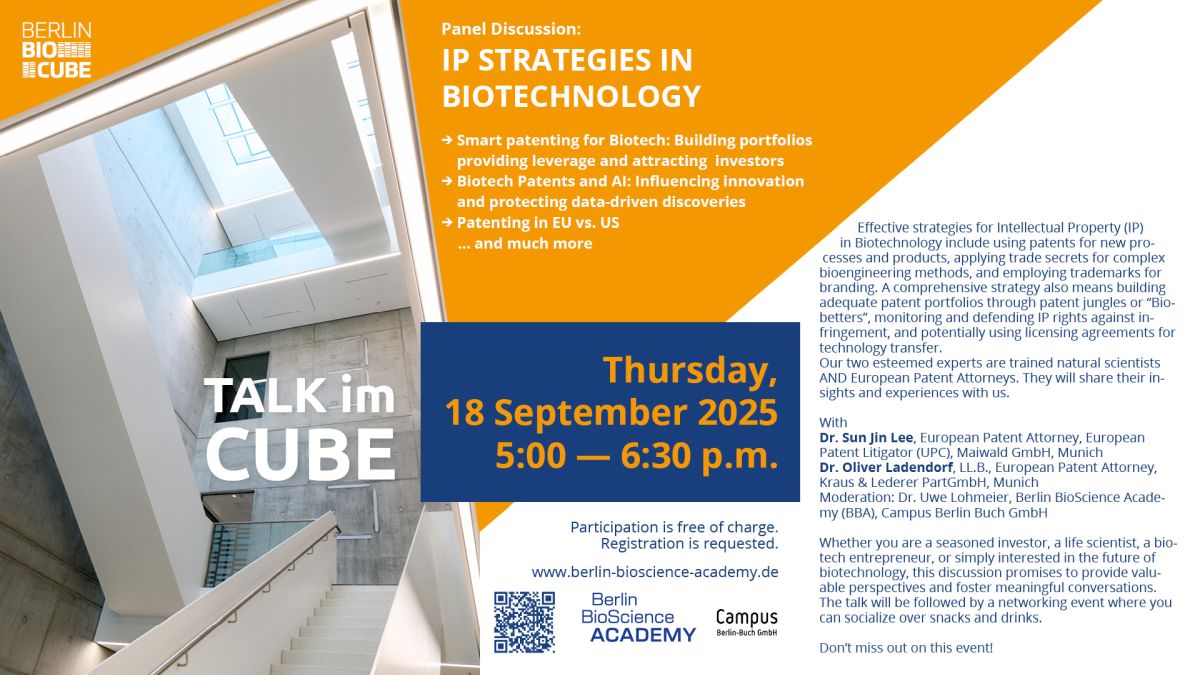
We are excited to continue the Talks in the Cube with an expert discussion focused on Strategies for Intellectual Property Rights in Biotechnology.
Effective strategies for Intellectual Property (IP) in Biotechnology include using patents for new processes and products, applying trade secrets for complex bioengineering methods, and employing trademarks for branding. A comprehensive strategy also means building adequate patent portfolios through patent jungles or "Biobetters", monitoring and defending IP rights against infringement, and potentially using licensing agreements for technology transfer.
Our two esteemed experts who are trained natural scientists AND European Patent Attorneys. They will share their insights and experiences with us.
A Panel Discussion with
Dr. Sun Jin Lee, European Patent Attorney, European Patent Litigator (UPC), Maiwald GmbH, Munich
Dr. Oliver Ladendorf, LL.B., European Patent Attorney, Kraus & Lederer PartGmbH, Munich
Dr. Uwe Lohmeier, Berlin BioScience Academy (BBA), Campus Berlin Buch GmbH (Moderation).
Topics planned to be addressed
- Smart patenting for Biotech: Portfolios providing leverage and attracting investors
- Licensing of innovative technologies: Patents for organoids and CRISPR/Cas
- Biotech Patents and AI: Examples to influence innovations and to protect data-driven discoveries.
The talk will be followed by a networking event where you can socialize over snacks and drinks.
Target audience
Founders & scientists from start-ups, small and medium-sized life science companies and scientific institutions.
Costs
Participation is free of charge. Registration is requested.
When
Thursday, 18 September 2025
5:00 p.m. - 7:00 p.m.
Where
BerlinBioCube (Building D95), Campus Berlin-Buch, Robert-Rössle-Straße 10, 13125 Berlin
Quelle: BerlinBioscience Academy
Further information and registration
Research / 29.08.2025
Professorship awarded to Ashley Sanders

Ashley Sanders has been awarded a full professorship from Charité –Universitätsmedizin Berlin. The tenured position will enable her and her team to expand their research on developing personalized therapies for inflammatory bowel disease and other conditions.
Dr. Ashley Sanders, Group Leader of the Genome Instability and Somatic Mosaicism lab at the Berlin Institute for Medical Systems Biology of the Max Delbrück Center (MDC-BIMSB), has been awarded a W3 professorship from Charité – Universitätsmedizin Berlin in the Faculty of Medicine. This prestigious recognition honors Sanders’contributions to the field of single-cell DNA sequencing, where she has helped redefine our understanding of genomic structure and variability.
“The professorship is a complete game-changer for me and my team,” says Sanders, who has been a junior group leader at the Max Delbrück Center since only 2021.
Through her research, Sanders has expanded the scope of single-cell genomics beyond RNA analysis to include DNA. She helped develop Strand-seq, a technique that enables scientists to detect structural variants – such as inversions, duplications, and deletions – in the DNA of individual cells. Her work has revealed that that somatic genomic mosaicism is more common than previously thought – challenging the longstanding assumption that all cells in a person’s body share an identical DNA sequence. Moreover, Sanders’ research suggests that structural variation in our cellular DNA may contribute to the development cancer, inflammatory bowel and autoimmune diseases. Such insights, she hopes, will lay the groundwork for personalized medicine.
Her professorship officially begins on September 1, 2025. “It’s a tremendous honor,” Sanders says with excitement. “We now have the stability and long-term perspective to fulfill the vision we started with.”
Text: Gunjan Sinha
Further information
The pioneer of single cell sequencing (profile of Ashley Sanders)
Research, Patient care / 21.08.2025
Klaus Rajewsky honored for a lifetime of achievements
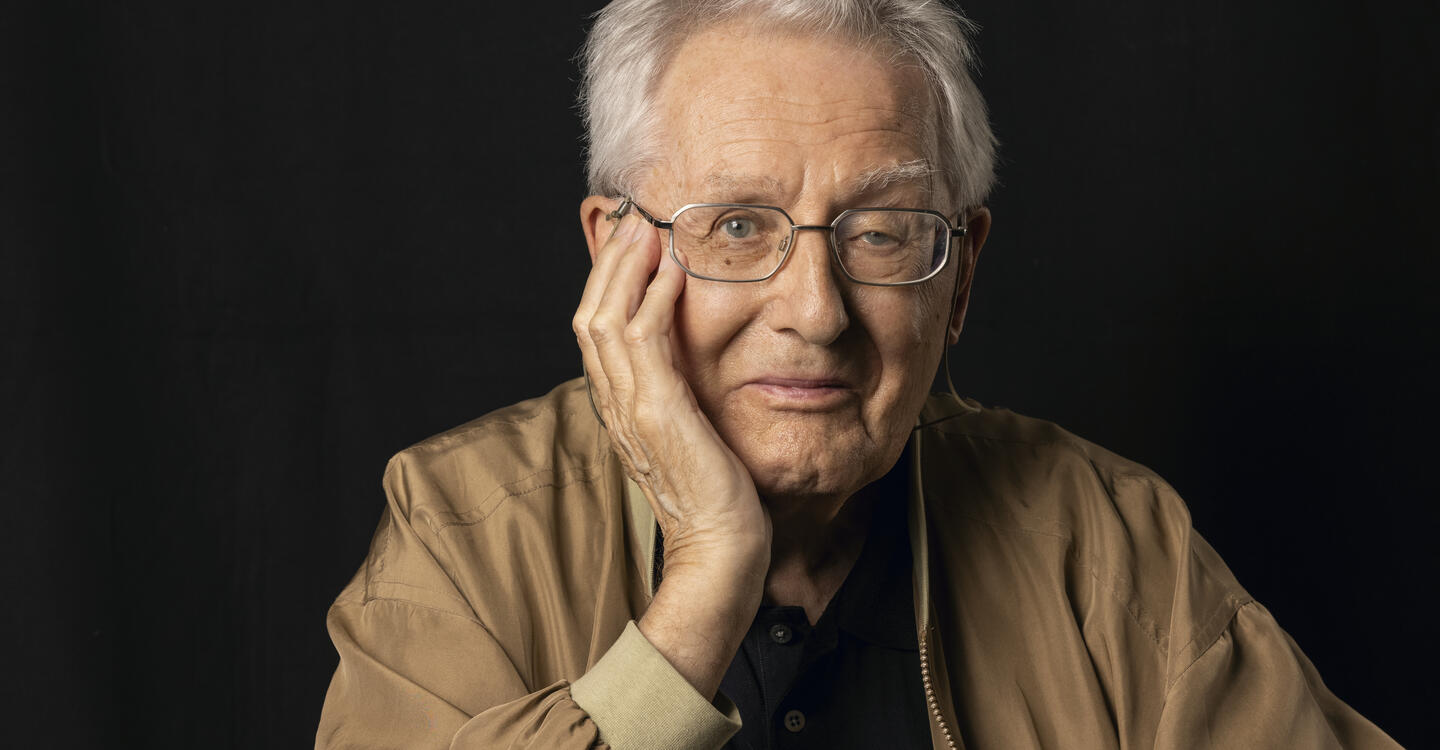
The European Federation of Immunological Societies is awarding Klaus Rajewsky of the Max Delbrück Center its first-ever Lifetime Achievement Award. The 88-year-old Rajewsky, who remains active in research, is being recognized for his pioneering work in cellular and molecular immunology.
It all started with twelve rabbit cages in Cologne – and a position as a stand-in for a scientific assistant. In 1964, at the age of 27, Klaus Rajewsky arrived at the newly established Institute for Genetics, founded by Max Delbrück, after studying medicine in Frankfurt and Munich and spending two years conducting research in Paris. His primary tasks were to produce antibodies in rabbits and to secure funding for his own studies. “I was the only immunologist there, and the others seemed to find my antibodies useful,” Professsor Rajewsky recalls.
By the time he left the University of Cologne 38 years later to join Harvard Medical School in Boston – sidestepping mandatory retirement in Germany – his department had become the institute’s largest and was internationally recognized among immunologists and molecular biologists. Since 2011, the 88-year-old Rajewsky has headed the Immunoregulation and Cancer research group at the Max Delbrück Center. His career spans more than six decades, during which he uncovered many of the genetic mechanisms that govern the immune system and contribute to disease.
The European Federation of Immunological Societies (EFIS) is now recognizing Rajewsky’s life’s work. To mark its 50th anniversary, EFIS – the umbrella organization of 26 national immunology societies across Europe – is awarding its first Lifetime Achievement Award. Rajewsky is being honored a pioneer in the field of cellular and molecular immunology.
“Groundbreaking research, transformative innovations”
“When I learned about the award, it was a very moving moment for me,” Rajewsky says. “EFIS is a large community of immunologists – and the fact that they chose me, someone who started out so small, for their first Lifetime Achievement Award is really wonderful.” He received the award on August 17, 2025, in Vienna during the Congress of the International Union of Immunological Societies.
Rajewsky was nominated by the German Society for Immunology (DGfI), which he co-founded in 1967. EFIS cited his groundbreaking research, transformative innovations, and his mentorship of generations of immunologists as reasons for the award. It highlighted his foundational work on antibody-producing B cells and the development of a gene-targeting system that for the first time allowed researchers to switch individual genes on or off in specific tissues or at specific times. “Traditional gene targeting, by contrast, would alter all cells in the organism,” Rajewsky explains. Researchers from around the world came to his lab in Cologne to learn this CRE/loxP-based method.
EFIS also praised Rajewsky for adopting and refining cutting-edge technologies such as microRNA analysis and the CRISPR/Cas9 gene-editing tool early on in immunological research. Just three years ago, his team published a modified version of CRISPR/Cas9 in the journal Science Advances that offers significantly greater precision than earlier versions – potentially making it especially well-suited for correcting genetic diseases caused by a single mutation.
Still much to do
The publication is just one among a long list of scientific papers to which Rajewsky has contributed – more than 500, by his estimate. Together with colleagues and a pathologist, he was also the first to identify that the previously mysterious Hodgkin lymphoma arises from B cells at a specific developmental stage. Rajewsky “has been a tireless promoter of collaborative science and international exchange,” EFIS said in a statement about the award. “As a mentor, he has trained and inspired generations of immunologists in Germany, across Europe, and internationally.”
His work is far from over. “Right now, we’re looking at certain inherited immunodeficiencies in which T cells don’t function properly,” he says. These cells can be genetically repaired. Rajewsky and his current ten-person team have shown in mouse models that the animals can be cured of these deadly inherited conditions. Their experiments with human cells have also been successful. “These are very rare conditions in humans, though – which makes it difficult to secure funding for clinical trials,” Rajewsky notes. But perhaps the wealth of experience he has collected over his 60-year career will help him to ultimately move this research forward.
Text: Anke Brodmerkel
Further information
www.mdc-berlin.deResearch, Patient care / 15.08.2025
Boosting vaccine efficacy as we age
Can an aging immune system be coaxed into responding to vaccination like its’ younger self? In “Nature Aging,” Sebastian Hofer, Katja Simon and colleagues discuss emerging interventions that may boost older adults’ response to vaccines. They are also recruiting volunteers for a clinical trial of their own.
As we age, our immune systems weaken. This decline – known as immunosenescence –makes older people more vulnerable to infections and less responsive to vaccines, creating a self-reinforcing vicious cycle. While lifestyle-related and age-associated diseases such as obesity and diabetes contribute to this decline, the core problem lies in how aging alters immune cells and their internal maintenance systems.
In a review article published in “Nature Aging,” Dr. Sebastian Hofer, a postdoc in the Cell Biology of Immunity lab of Professor Katja Simon at the Max Delbrück Center, and colleagues in the U.K. discuss how we may be able to boost vaccine immunity in older adults by incorporating knowledge gleaned from the latest research on the biology of aging. Traditionally, vaccine makers have relied on technological approaches, such as adding compounds to vaccines to elicit a stronger immune response – but these are not always effective.
In recent years, it has become clear that there are other approaches that potentially complement technological fixes, and may be more practical than developing novel vaccines for different age groups, says Simon. Researchers studying the biology of aging, for example, have shown that certain drugs such as metformin, used to treat type 2 diabetes, and rapamycin, commonly given to organ transplant recipients, can extend life and health span in insects, rodents and other animals. They do so in part by acting on the immune system. Other research has also shown that exercise and restricting calories in both humans and animals can slow the decline in immune cell function as we age. Such research has been complemented by a better understanding of the cellular mechanisms behind this decline in immunity, Hofer adds.
In the following interview, Hofer and Simon discuss how incorporating this knowledge into vaccination efforts might help to improve our aging body’s response to vaccines. To wit, they are recruiting volunteers for a clinical trial to test specifically whether dietary intervention might improve vaccine response.
Can you explain immunosenescence and how immunity wanes with age?
Katja Simon: Immunosenescence is a broad term for the gradual decline of the immune system as we get older. Chronic diseases are more common in older people and these contribute to a decline in immune function. But a central hallmark of immune aging that happens even in the absence of chronic disease is a decline in the ability of immune cells to clean out damage and waste, along many other molecular alterations. This particular process is called autophagy and it’s a fundamental recycling process that takes place in every cell of the body. A decline in “autophagy flux” – the efficiency of the cells’ recycling cycle – contributes to a weakened immune response in older adults. Our lab, has spent years studying autophagy and how restoring it in aging immune cells may enhance immunity.
Of all the interventions shown to extend lifespan in animals such as drugs or lifestyle changes, do we know how they work?
Sebastian Hofer: Scientists have a good idea of how interventions like caloric restriction and rapamycin may extend lifespan – at least in animals – but the picture in humans is still evolving. Many interventions tested in the field of aging biology seem to work by nudging cells into a kind of protective, energy-saving mode: they reduce inflammation, slow metabolism, and boost autophagy. Restricting calories does this naturally, while drugs like rapamycin mimic some of those effects by targeting specific cellular pathways. These changes help cells repair damage, stay resilient, and function better as we age. However, while the biology is promising, especially in lab animals, we’re still learning how well these interventions work in people – and who and which tissues might benefit the most.
Have any of these interventions been tried to improve vaccine response in older adults?
SH: While more and more researchers are applying knowledge from aging biology to the design of clinical trials, based on our review of the literature, rapamycin appears to be the only one sufficiently tested regarding its impact on vaccine response. These studies suggest that rapamycin can enhance vaccine efficacy in older adults by tuning the immune system to respond more robustly. Rapamycin works by blocking a protein called mTOR, which acts like a master switch in cells that controls growth and energy use. When mTOR is inhibited, cells shift into a more cautious, repair-focused state – reducing inflammation, improving autophagy, and making immune cells more responsive to stimuli.
You are currently recruiting volunteers for a clinical trial to test whether dietary intervention can boost immune response to vaccines. Can you provide more details?
SH: The pilot trial, named VITAL, will recruit 24 volunteers over the age of 60. Half will be asked to eat their meals within an 8-hour window, and nothing in between. We want to see if a 4-week phase with intermittent fasting can improve the immune response to influenza and COVID vaccines compared to the non-fasting group. Our trial is based on preclinical evidence showing that short-term dietary interventions can rejuvenate immune function – possibly by improving autophagy. And we are focusing on the seasonal influenza vaccine because studies have shown that a significant proportion of people over the age of 60 respond poorly to flu vaccines. People in our trial will also be outfitted with technology and administered blood tests to monitor their adherence to the fasting protocol.
Why did you choose a dietary intervention over a drug like rapamycin?
SH: Since fasting is non-pharmacological and physiological, it's an attractive strategy from both a safety and accessibility perspective. Also, this type of trial, which is almost never done in a commercial setting, is also well suited for a government funded institute like our own. Moreover, tackling the complex problems of immune system aging will also likely benefit from interventions that target multiple molecular pathways at once, such as restricting calories. But we are also studying other interventions. The Simon lab for example has shown in a clinical trial that the dietary supplement spermidine can also boost immune response to vaccines in older people. The research is currently pending publication, but our findings suggest that spermidine also may help improve COVID vaccine response in older populations.
Why is this such an important public health issue?
KS: Our populations are aging and we know that after the age of 60 to 65, people are more susceptible to infections. The 60 plus demographic group globally was the most severely affected by the COVID-19 pandemic and it is also the age group with the highest risk of death from infection with influenza. Unfortunately, data consistently show that the effectiveness of various protective vaccines decreases with age, especially in those who need protection the most. We are likely also facing a future of more frequent outbreaks of new infectious diseases. A straightforward and easily implemented intervention that improves immunity and vaccine efficacy in this group could save a lot of lives.
Sebastian Hofer, Katja Simon and their team are currently recruiting people over the age of 60 for their clinical trial to test whether intermittent fasting can boost response to influenza and COVID vaccination. For more information or to volunteer for the trial, please contact Sebastian (Sebastian.hofer@mdc-berlin.de) or the Clinical Research Unit at the ECRC (vital@charite.de).
Further information
Research, Patient care, Education / 14.08.2025
Promoting awareness of health research
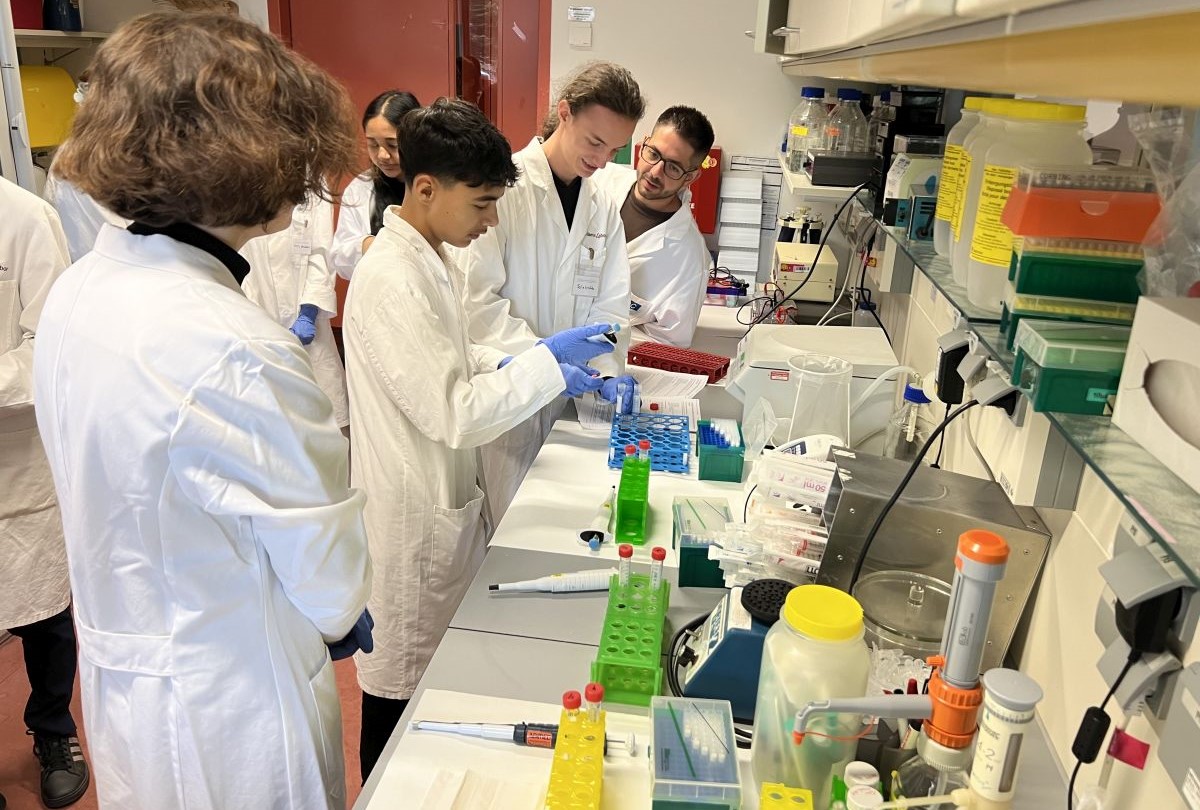
During a week-long course at the Gläsernes Labor, 24 teenagers delved into genetics, immunology, and allergic disease. The course marked the beginning of a new collaboration with the Max Delbrück Center, Charité – Universitätsmedizin Berlin, the German Center for Child and Adolescent Health and others.
Dr. Aleix Arnau Soler, you’re a scientist in the Molecular Genetics of Allergic Diseases lab at the Max Delbrück Center and helped launch this project week in July 2025. How did it come about?
Dr. Aleix Arnau Soler: I took part in a science communication workshop organized by our communications department in 2024. The goal was to develop initiatives for our Life Science Learning Lab “Gläsernes Labor” that integrate new developments in research. I’m also affiliated with the German Center for Child and Adolescent Health (DZKJ), a government-funded network established in 2024 to strengthen research in pediatric and adolescent medicine. The DZKJ is working on strategies to actively involve children and families in health research.
What does that look like in practice?
For example, engaging with children directly, sparking their interest in research, and showing them how we investigate the causes of diseases. Because this work focuses on child health, the DZKJ wants to start conversations with kids and their parents early on. They were looking for partners to help put these ideas into action...
...and you were already involved with the Life Science Learning Lab on the Berlin-Buch campus.
Exactly. The Gläsernes Labor – with its experienced education team, established teaching formats, and strong ties to the campus research community – was an ideal partner. So the DZKJ teamed up with the Max Delbrück Center, Charité - Universitätsmedizin Berlin (Pediatric Clinic), the German Rheumatology Research Center (DRFZ) and the Gläsernes Labor, to design a course on genetics and immunology, including immune response and allergy treatment. These are issues that affect many people, including children and teens. The participants had the chance to explore the science in these areas in a real research setting – and hopefully came away with a deeper appreciation for the importance of health and health research.
How did you select participants for the project week?
The students came from the Robert Havemann Gymnasium in Berlin, which has an ongoing partnership with the Gläsernes Labor. One group focused on genetics, the other on immunology. They carried out hands-on experiments like DNA isolation, PCR, and electrophoresis. At the end of the week, they created posters to present their findings at school. Our lab hosted the immunology group. We showed them a diagnostic test for allergies, for example, and walked them through a key step in the DNA isolation protocol: adding alcohol to a blood sample, which causes the DNA to form a visible “cloud.” The students were highly engaged and clearly enjoyed the experience. I completely understand – back when I was in school, it would have been unthinkable to get that kind of inside look at how research is done at a scientific institute.
Will the collaboration continue?
The DZKJ is currently undergoing evaluation for its next funding period. Once that process is complete, I expect the partnership will be extended for several more years, allowing us to develop new program formats. One idea for the future: patients with conditions such as obesity, cystic fibrosis, or hearing loss who are being treated at Charité could be offered tailored courses that provide research-based insights into their conditions – why they occur and how to manage them. I think that would be a powerful way to bring science closer to people and, at the same time, give us an opportunity to learn more about what people need or expect from research.
Interview: Wiebke Peters
Further information
- 25 years of the Life Science Learning lab
- Gläsernes Labor
- Education for students and teachers
- German Center for Child and Adolescent Health
Photo: Dr. Aleix Arnau Soler and PhD student Alisa Iakupova gave students from the Robert Havemann High School an insight into allergy research in the laboratory. © Prof. Dr. Young-Ae Lee, Max Delbrück Center
Source: Max Delbrück Center
Promoting awareness of health research
Research, Patient care / 08.08.2025
Targeting sleeping tumor cells
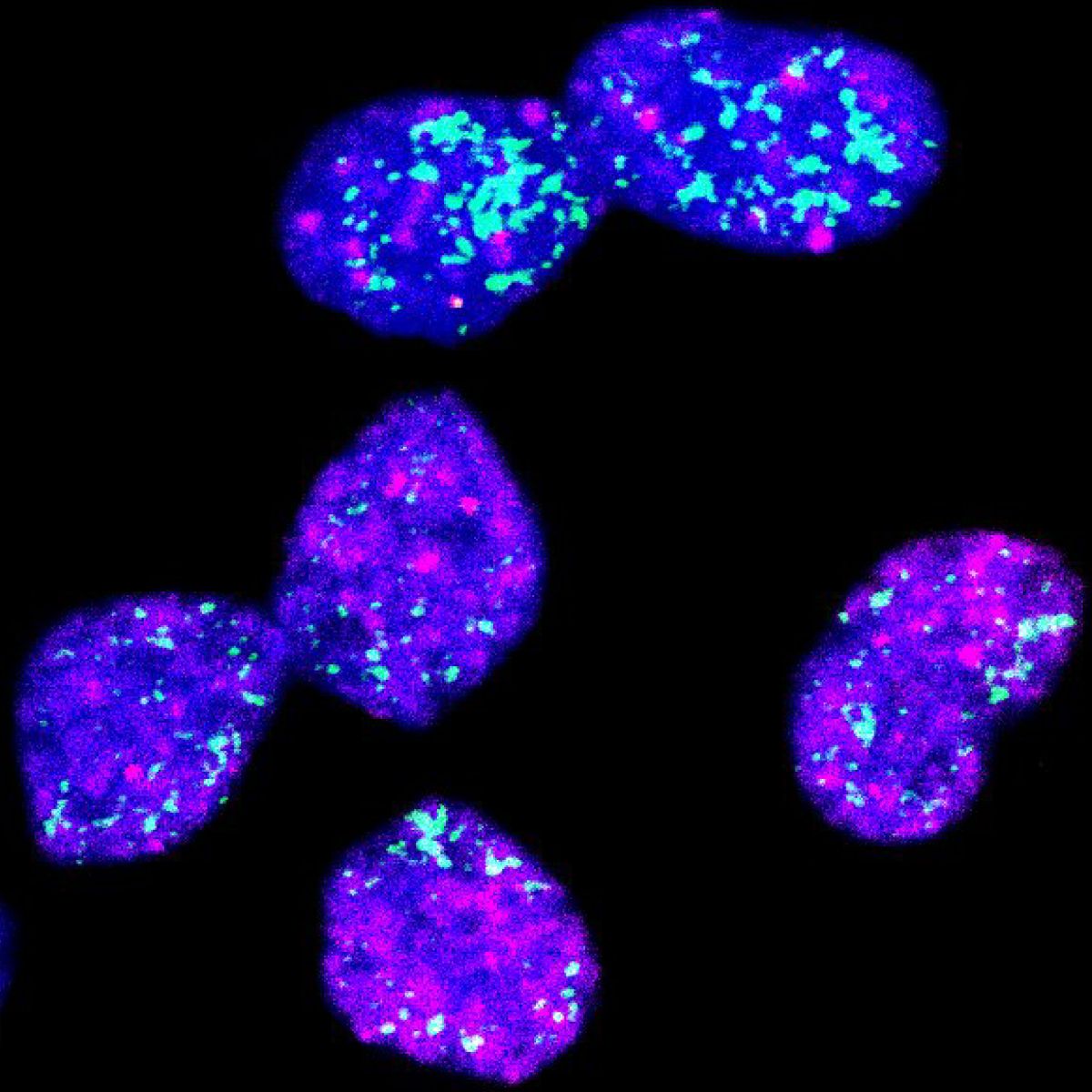
Neuroblastoma, a cancer mainly affecting children, is often difficult to treat. A team led by Jan Dörr and Anton Henssen at the Experimental and Clinical Research Center report in “Cancer Discovery,” a potential reason treatment sometimes fails and a new strategy to combat particularly resistant tumors.
Neuroblastoma can be a particularly insidious cancer. In about half of all cases, tumors regress, even without therapy. In the other half, tumors grow very quickly. These tumors often respond well to chemotherapy at first, but usually return after one to two years. A characteristic feature of such aggressive neuroblastoma cells is an abnormally high number of copies of the oncogene MYCN.
A team led by Dr. Jan Rafael Dörr and Professor Anton Henssen from the Experimental and Clinical Research Center (ECRC), a joint institution of Charité – Universitätsmedizin Berlin and the Max Delbrück Center, has now discovered that the location of the MYCN gene plays an important role in the aggressiveness of neuroblastoma: If it is located outside chromosomes, cancer cells enter a dormant state and thereby render themselves immune to therapy. In "Cancer Discovery," a journal of the American Association for Cancer Research, the research team propose a new treatment strategy that targets these dormant tumor cells. Their approach has already proven successful in a mouse model.
The study’s first authors are Dr. Giulia Montuori, a scientist at the Department of Pediatric Oncology and Hematology at Charité, where Dörr and Henssen also work as pediatric oncologists, and Fengyu Tu, who conducts research under the supervision of Dr. Benjamin Werner and Dr. Weini Huang in both London and China. Henssen, Werner and Huang are members of the international Cancer Grand Challenges team eDyNAmiC, which is funded by Cancer Research UK and the U.S. National Cancer Institute. Dr. Fabian Coscia’s Spatial Proteomics research group at the Max Delbrück Center also played a key role. The study is a prime example, say Dörr and Henssen, of how international collaboration between clinical and research teams can benefit patients.
Cancer genes on tiny DNA rings
Neuroblastoma is one of the most common cancers in children. The tumors develop from cells of the sympathetic nervous system, can occur anywhere in the body, and mostly affect children under the age of five. “Neuroblastomas with the MYCN oncogene have been particularly hard to treat,” says Dörr, Head of the ECRC research group Tumor Heterogeneity and Therapy Resistance in Pediatric Tumors. “We wanted to find out exactly what the gene does in cancer cells, how it might influence the expression of other genes and how tumors can be destroyed more effectively in the future,” he explains.
Henssen, Head of the ECRC research group Genomic Instability in Pediatric Tumors, has previously shown that these oncogenes are often not located on chromosomes in cell nuclei, but rather on many small, ring-shaped DNA molecules inside tumor cells. “When these cells divide, this DNA is distributed randomly to daughter cells – unlike chromosomal DNA,” Henssen explains. As a result, neuroblastomas can contain a mix of cells, some with high numbers of MYCN genes and others with very few.
The sleeping cells escape treatment
Dörr and his team investigated the tumor cells further. “Together with Fabian Coscia's group, we succeeded in separating cells with many MYCN copies from those with few copies, thanks to a method described for the first time in the study, and then investigating how the composition of the proteins and the phenotype of these cells differ from one another,” Dörr explains.
In experiments with cultured tumor cells, mouse models and patient samples, the researchers were then able to show that only aggressive cells with many MYCN copies are destroyed by chemotherapy. “Tumor cells with few MYCN copies, on the other hand, survive and merely enter into a kind of deep sleep,” explains Dörr. However, they can awaken from this deep sleep through wake-up calls that are not yet fully understood, and then contribute to the cancer recurring.
A new strategy for brain tumors, too
“There are drugs that specifically target senescent, or sleeping, cells,” says Dörr. In mouse models, he and his team demonstrated that combining chemotherapy – which eliminates fast-growing cells with many MYCN copies – with a second drug that targets senescent cells can significantly improve treatment outcomes for neuroblastoma. “Our approach is likely suitable only for tumors in which the MYCN gene or other oncogenes are located on extrachromosomal DNA,” says Dörr. For tumors with chromosomal oncogenes, different strategies will be needed.
Next, the team plans to systematically search for additional compounds that can selectively attack dormant tumor cells in human tissue while sparing healthy cells. “This approach could also be relevant for other cancers that involve genes located on extra-chromosomal ring-shaped DNA,” Henssen adds – including dreaded brain tumors.
Text: Anke Brodmerkel
Source: Joint press release by the Max Delbrück Center and Charité – Universitätsmedizin Berlin
Targeting sleeping tumor cells
Innovation / 29.07.2025
Eckert & Ziegler Selected as US Manufacturer for Archeus’ Next-Generation Radiopharmaceutical ART-101
Eckert & Ziegler (ISIN DE0005659700) has entered a Master Service Agreement with Archeus Technologies (Archeus), a company developing multiple differentiated radiopharmaceutical therapies, for contract manufacturing of its novel investigational compound ART-101. The agreement supports Archeus’ upcoming Phase 1 clinical trial of ART-101 in the United States, with manufacturing to be performed at Eckert & Ziegler’s state-of-the-art GMP facility in Boston, MA.
ART-101 is a next-generation small molecule that targets prostate-specific membrane antigen (PSMA) and is in development for the imaging and treatment of prostate cancer. Preclinical studies suggest ART-101 may offer enhanced pharmacology and tolerability compared to existing PSMA-targeted therapies.
“We are pleased to partner with Archeus on the clinical development of ART-101,” commented Dr. Harald Hasselmann, Chief Executive Officer of Eckert & Ziegler SE. “Our GMP-certified Boston facility is ideally equipped to support their early-phase development needs. This collaboration reflects our broader commitment to advancing next-generation targeted radiotherapies through high-quality manufacturing and clinical supply services.”
“Eckert & Ziegler’s GMP infrastructure, operational reliability, and radiopharmaceutical manufacturing expertise enable Archeus to quickly and confidently advance ART-101 into first-in-human trials this year,” added Evan Sengbusch, Ph.D., Chief Executive Officer of Archeus Technologies.
The collaboration is an important milestone in the ongoing efforts of both companies to advance the development of innovative solutions in the radiopharmaceutical field. Eckert & Ziegler operates several CMO sites worldwide and offers a range of other services along the entire value chain including the supply of high-quality radioisotopes.
About Eckert & Ziegler
Eckert & Ziegler SE, with more than 1,000 employees, is a leading specialist in isotope-related components for nuclear medicine and radiation therapy. The company offers a broad range of services and products for the radiopharmaceutical industry, from early development work to contract manufacturing and distribution. Eckert & Ziegler shares (ISIN DE0005659700) are listed in the TecDAX index of Deutsche Börse.
Source: Press Release Eckert & Ziegler
Eckert & Ziegler Selected as US Manufacturer for Archeus’ Next-Generation Radiopharmaceutical ART-101
Innovation / 28.07.2025
Eckert & Ziegler: Capital Increase Entered in the Commercial Register. Share Split in Preparation.
The Annual General Meeting of Eckert & Ziegler SE (ISIN DE0005659700) resolved on June 18, 2025, to increase the share capital using company funds by € 42,343,864 to € 63,515,796.
The capital increase was entered in the commercial register on 25 July 2025 and thus became effective. As a result, the company's share capital increased from € 21,171,932 to € 63,515,796.
The company will report on the exact details of the share split once the technical details have been finalized with the banks.
The share split aims in particular to increase the liquidity of the share and thus facilitate the tradability of Eckert & Ziegler shares.
About Eckert & Ziegler.
Eckert & Ziegler SE with more than 1.000 employees, is a leading specialist for isotope-related components in nuclear medicine and radiation therapy. The company offers a broad range of services and products for the radiopharmaceutical industry, from early development work to contract manufacturing and distribution. Eckert & Ziegler shares (ISIN DE0005659700) are listed in the TecDAX index of Deutsche Börse.
Source: Press Release Eckert & Ziegler
Eckert & Ziegler: Capital Increase Entered in the Commercial Register. Share Split in Preparation
Research, Patient care / 18.07.2025
Summer Science Day 2025: Uniting under one goal
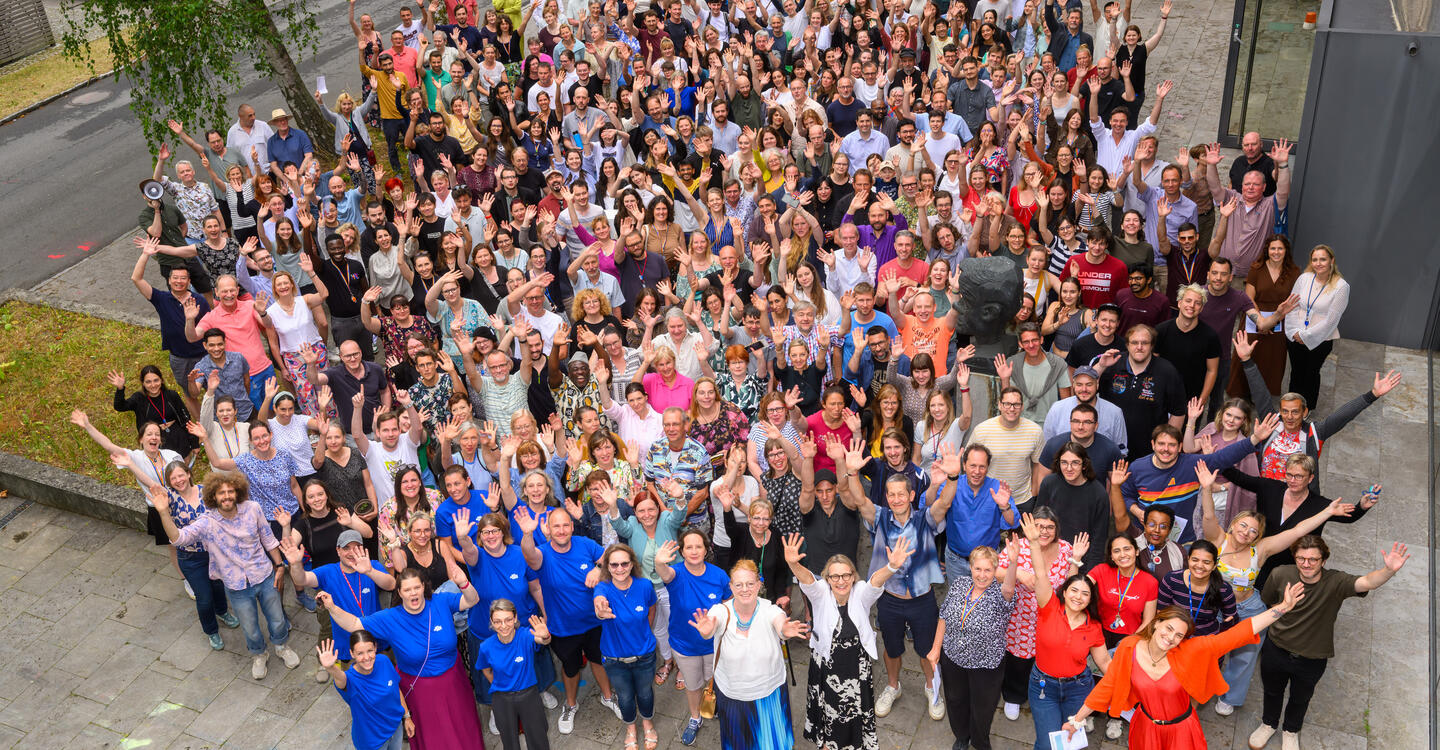
Lab tours, lively talks, music and awards – Summer Science Day 2025 brought the Max Delbrück Center community together like never before. In addition to food and games, this year's new format created space to spark dialogue across our diverse teams.
On July 3, the Max Delbrück Center celebrated Summer Science Day 2025 – transforming the campus into a vibrant hub of scientific exploration and community engagement. This year, in addition to a festive program of food, music and games, the event featured lab tours, presentations, workshops and information booths to foster exchange among our diverse staff. People who work in administration had the opportunity to learn about how research is done at our center, and vice-versa. The program was specifically designed to support goals set out in our new Strategy 2030.
“Summer Science Day is about uniting our institute under a shared vision,” said Professor Maike Sander, Scientific Director of the Max Delbrück Center in her opening talk. “We aim to advance predictive systems medicine and everyone plays a vital role in making that happen.”
“We have already grown together,” added Kirstin Bodensiek, Acting Administrative Director of the Max Delbrück Center. “With this new event format, we are continuing to build bridges to foster greater exchange from the bottom up. That’s not only who we are, but also who we want to be.”
Talks, workshops, games
On a pleasantly warm summer day, the Max Delbrück Center staff could choose from over 50 different activities that included: gathering information at booths about what the different departments do, join games such as Immune Cell Bingo and a Pub Quiz, or simply linger over lunch at picnic tables set out on the large lawn at Campus Buch.
At one workshop, for example, participants used precision lasers, normally used to extract single cells from tissues, to inscribe their names onto individual rice grains. And during a lab tour of the Advanced Light Microscopy Platform, visitors gained insight into imaging technologies that researchers use to visualize cellular structures and processes.
Head of Technical Facility Management Ralph Streckwall gave a tour of our new demonstrator lab, where interdisciplinary research teams will come together to translate our discoveries into innovative therapies – the lab is scheduled to be begin operations in September. And Sustainability Officer Christian Panetzky gave a talk about steps Max Delbrück labs are taking to reduce their environmental impact. And as part additional sustainability efforts, staff were invited to contribute to building a new raised garden bed using repurposed old microscope cases as a frame.
Honoring our own
Capping the event were two different awards honoring employees who have shown outstanding effort this year. This first recognized people who work behind the scenes on various projects, but who remain in the background. These “Silent Heroes” are often the backbone of campus operations and deserve recognition, said Dr. Jean-Yves Tano from Friends of the Max Delbrück Center, which sponsored the award that comes with a small cash prize.
The first place “Silent Hero” award went to Dr. Timkehet Teffera Mekonnen from our events team. “She is the kind of person who shows up every day not to be seen, but to really make a difference. She does it quietly, steadily, with warmth and fun,” said Science Manager Anne Merks, who honored Mekonnen by reading aloud comments from people who supported her nomination. “Timi is that the rock that every team needs, the epitome of above and beyond. Whatever life and circumstance might throw at her, she just takes it and deals with it, calm, collected and with a smile,” wrote another person.
Jana Richter, Technical Assistant in the lab of Professor Philipp Junker, took second place for always being available to her team to get a job done. “She often says that for her little sheep, she will do anything. And everyone who works with her says that this is true,” said Johanna Berenike Kroll, a PhD student in the Junker lab who nominated Richter. Michaela Herzig, who will be leaving the Max Delbrück Center this year, won 3rd place for her 15 years of service in building the graduate program. “She has been very instrumental in many different projects,” said Tano. “We are really happy to have had her here.”
This year also featured a “Marvelous Mentor” award. “This award shines a light on something we all know makes a huge difference in science – but is often not recognized enough: great mentorship,” said Dr. Grietje Krabbe from our Strategy Department. The award recognizes people committed to supporting junior staff by offering genuine care, an inclusive environment and encouraging strategic action, she added. Other criteria include adapting mentoring style to individual needs and leading by example. Of the nine nominees, the jury chose Dr. Daria Bunina, Group Leader of the Systems Biology of Cardiovascular Diseases lab, as winner of the award. Bunina and all nominees received certificates, because all of them are equally great, Krabbe said.
“The first Summer Science Day at the Max Delbrück Center, far exceeded our expectations,” Bodensiek said. “The program was diverse, inspiring, and rich with creativity. Most of all, the lively exchange of ideas and experiences throughout the day was a powerful reminder of the strength and vibrancy of our community.”
Text: Gunjan Sinha
Further information
www.mdc-berlin.de
Research / 16.07.2025
Our inventors meet Berlin’s venture capitalists
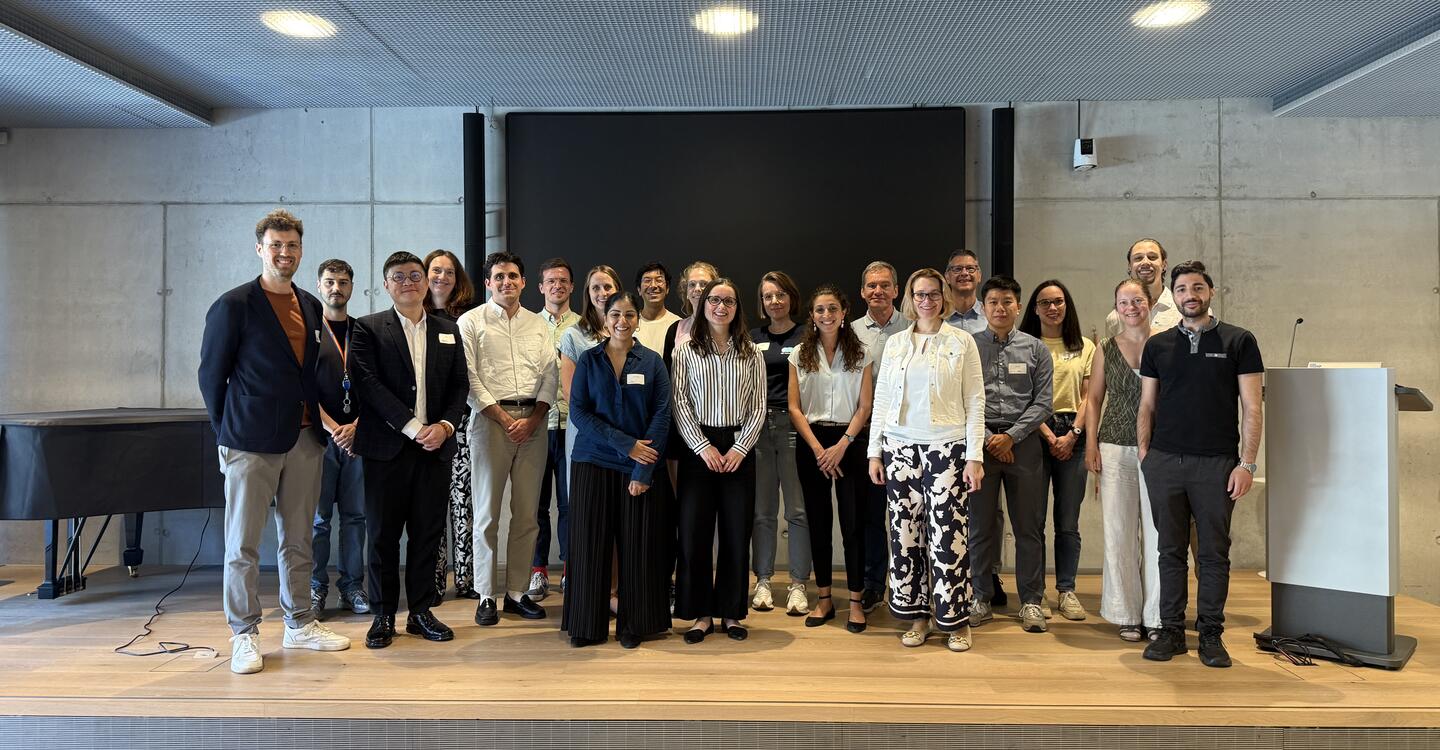
The first VC Day at the Max Delbrück Center brought together our budding entrepreneurs with the CLIC incubator and top venture capital working in Berlin biotechnology for a day of pitching, exchange and networking.
Next-generation CAR T-cell therapies engineered to disrupt tumor microenvironments; deep phenotyping of neurodegenerative diseases to develop new drugs – these were among the spinoff projects pitched by our scientists last week during VC Day.
Twelve inventors supported by the Innovation and Entrepreneurship team were invited to present their projects in 5-minute pitches to a room of representatives from venture capital (VC) firms and BIH’s new Clinical Incubator (CLIC). The presentations, covering innovations in data science and diagnostics to therapeutics and engineering, were each followed by ten minutes of targeted feedback from the experts. Six VCs participated, including Apollo Health Ventures – a transatlantic early-stage biotech – and bmp Ventures – an early-stage German life sciences VC– in partnership with global shared lab facilities network BioLabs.
Early venture capital exposure
VCs are firms that invest in high-potential start-ups in exchange for equity, aiming for a financial return on their investment. Pitching to VCs generally occurs later in the development process, once a start-up has formed and is seeking seed funding.
Unconventionally, VC Day at the Max Delbrück Center gave inventors the unique opportunity to pitch at any stage of development – from early translational research to more advanced spinoff projects. This idea emerged through conversations that Dr. Nevine Shalaby, head of the Max Delbrück Center’s Innovation and Entrepreneurship department, had with VCs in her network. “They told me, ‘Actually we love to listen to projects early in development because that’s when we can give useful feedback to help shape the project from a business perspective,” Shalaby recalls.
As with any skill, practice improves performance. “We wanted to give our scientists the opportunity to pitch, receive expert feedback, improve, and repeat,” Shalaby adds. Feedback at such an early stage, “encourages scientists to think about how they can develop their translational project with a commercial mindset.” Advice was tailored to each project. VC representatives offered insight on timelines, target markets, and business models – key elements of a solid commercial strategy.
Dr. Klaas Yperman, one of the department’s innovation managers, also participated in the event as the business lead of a neuropathic pain therapy spinoff. Involvement of funders from a project’s earliest stages helps to build trust and long-term relationships that can lead to future investment, he says. “VCs often want to see a project develop over time through multiple interactions before they commit to investing.”
Informal setting
The participating inventors and VCs benefited from the small group format. Each pitch received feedback from multiple perspectives, and informal networking during breaks allowed for deeper conversations. “Having a small internal event allowed us to engage directly with the VCs,” says Yperman, “This wouldn’t have been possible in a large, 100-person setting.”
The benefits of the network created between Max Delbrück Center’s inventors and industry partners extended beyond those present in the room. “Even if your project didn’t fit a particular VC’s portfolio, they might say, ‘I know someone at another firm who could be interested – I’ll introduce you,’” explains Yperman. By showcasing some of the up-and-coming innovation talent from the Max Delbrück Center, the event also helped put the center on the map for Berlin’s biotech funders.
Training Berlin’s next biotech entrepreneurs
“The VCs that I spoke to were very impressed with the quality of the scientists’ pitches,” says Shalaby. Several pitches sparked follow-up discussions.
It’s an exciting time for innovation and translation, she adds. Upcoming activities include a workshop funded by H3 Health to train spinoff founders on how to navigate the regulatory path from lab to market. Meanwhile, preparations are underway for the opening of a knowledge hub that will serve as an incubator to support spin-off projects, not only by providing laboratory space, but also entrepreneurship training, networking and venture-building opportunities at Max Delbrück Center’s Campus Buch later this year.
Text: Anita Waltho
Innovation / 16.07.2025
Eckert & Ziegler: Outstanding Training Quality Once Again Awarded
Eckert & Ziegler SE (ISIN DE0005659700) has been recognized by the Berlin Chamber of Industry and Commerce (IHK) for the exceptional quality of its training program for the fourth time in a row. The Berlin-based healthcare company already held the award for “Excellent Training Quality” from 2019 to 2020, from 2021 to 2023 and from 2023 to 2025. In addition to successfully fulfilling all mandatory criteria, Eckert & Ziegler also scored highly in the voluntary and excellence criteria thanks to its long-standing commitment to training.
“Our trainees have the opportunity to gain valuable practical experience in a future-oriented growth area and take on varied tasks that allow them to be creative, contribute their own ideas, and take on responsibility," explains Dr. Harald Hasselmann, CEO of Eckert & Ziegler SE. “With a retention rate of around 70%, we also offer young talent real career prospects after completing their training. After all, well-trained specialists are essential for the success of a company.”
The Chamber of Industry and Commerce evaluated the training program at Eckert & Ziegler based on more than 30 including mandatory and excellence criteria. Among others, the framework conditions for trainees and training supervisors as well as the implementation and supervision of the individual training programs were evaluated. Particularly convincing were the individual work schedules of the trainees, which were adapted to the training plans, as well as the measures for team building and maintaining the trainee team across the various training professions. Eckert & Ziegler also scored highly for involving trainees in independent projects at an early stage, thereby enhancing their social skills.
Eckert & Ziegler trains industrial clerks, chemical laboratory assistants, IT specialists for system integration, and mechatronics engineers. There are still places available for the training program starting on September 1, 2026. We look forward to receiving your applications.
About Eckert & Ziegler.
Eckert & Ziegler SE with more than 1.000 employees, is a leading specialist for isotope-related components in nuclear medicine and radiation therapy. The company offers a broad range of services and products for the radiopharmaceutical industry, from early development work to contract manufacturing and distribution. Eckert & Ziegler shares (ISIN DE0005659700) are listed in the TecDAX index of Deutsche Börse.
Source: Press Release Eckert & Ziegler
Eckert & Ziegler: Outstanding Training Quality Once Again Awarded
Innovation / 15.07.2025
Biosynth Expands Berlin Site with a New Commercial Bioconjugation Suite
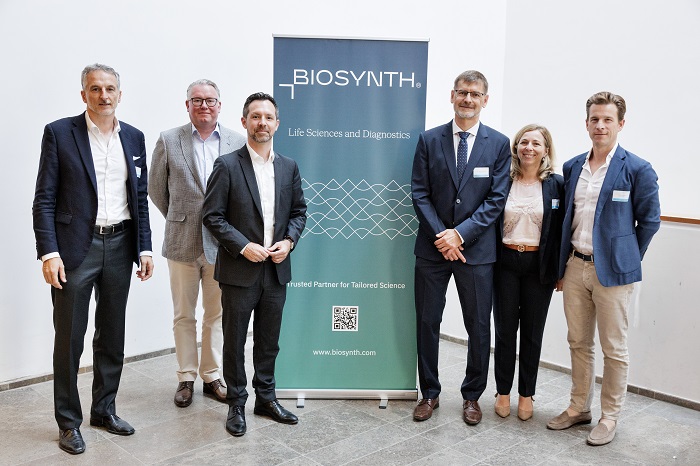
The new suite extends GMP bioconjugate production for intermediates and active pharmaceutical ingredients from early clinical phase through to late clinical phases and commercial supply.
Biosynth, a leading developer and supplier of critical raw materials and services for life sciences and diagnostics, is pleased to announce the opening of its expanded GMP bioconjugation facility at its existing Berlin site. This strategic expansion significantly enhances Biosynth's specialized manufacturing capabilities in conjugate vaccines and conjugate drugs, activated PEGs, and polymer-based drug delivery excipients as part of its global manufacturing network.
Thomas Eisele, Chief Operations Officer, stated, "We are thrilled to officially open the new expansion to our bioconjugation facility in Berlin, which represents a significant enhancement to our existing operations. This suite enables the scalable, diverse high-quality conjugation services that our customers need to advance to the next generation of therapies.”
Frank Leenders, General Manager for the Berlin site, commented, "The construction of our new facility, including class D and C cleanrooms, represents a natural evolution of our Berlin operation, in many ways we are growing alongside our customers. The additional refurbishment of our existing facility enhances our GMP manufacturing capabilities, reinforcing our commitment to meeting the evolving needs of our customers."
"Conjugation chemistry, advanced polymers and bioconjugation production are critical areas for many of our life science customers,” added Marie Leblanc, Executive Vice President, Life Sciences. “Being able to support projects fully from initial bioconjugate process development to commercial GMP supply enables us to provide specialized conjugation solutions for diagnostics and therapeutics, strengthening our position as a trusted partner in the Life Science industry.”
About Biosynth
Biosynth is a leading supplier of critical raw materials and services for the life sciences industry. With a deep commitment to quality, Biosynth serves pharmaceutical, diagnostics and life sciences research customers through its global network of R&D and production sites. Headquartered in Switzerland, Biosynth partners with customers worldwide to accelerate innovation and ensure reliability at every stage of development and manufacturing. For more information, please visit www.biosynth.com.
Photo: (v.l.) Prof. Dr. Gianfranco Pasut, Universität Padua, Italien; Dr. Sebastian Kopitzki, Production Supervisor, Biosynth GmbH, Berlin; Dr. Severin Fischer, Staatssekretär, Senatsverwaltung für Wirtschaft, Energie und Betriebe, Berlin; Dr. Frank Leenders, General Manager, Biosynth GmbH, Berlin; Dr. Marie Leblanc, Executive Vice President of Life Sciences, Biosynth; Matt Gunnison, Chief Executive Officer, Biosynth (Photo: Pierre Adenis/Biosynth)
Research / 09.07.2025
The cellular engineer
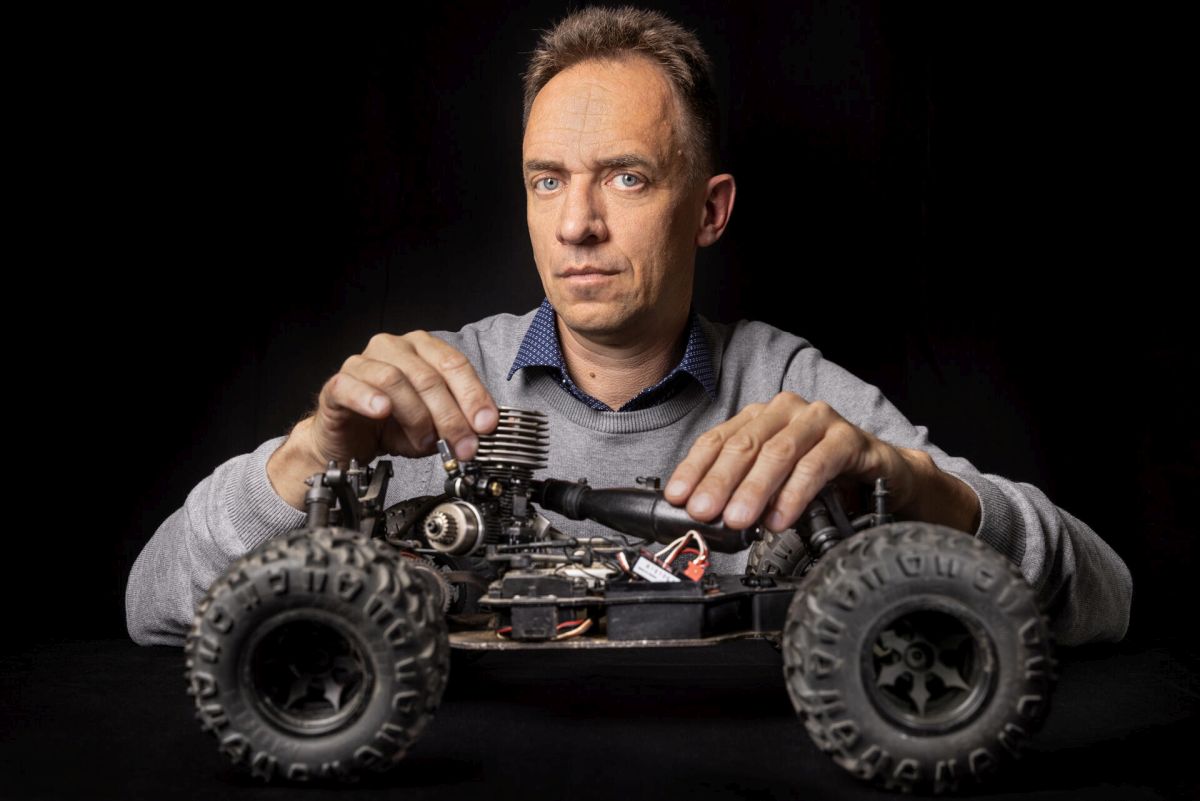
Molecular machines carry out many vital processes inside our cells. When their components – protein building blocks – are faulty, it can lead to disease. Structural biologist Oliver Daumke investigates how these machines are built, what makes them work, and what goes wrong when they malfunction.
For Professor Oliver Daumke, a cell is like an engine room – molecular machines made up of protein building blocks are continuously at work. These protein machines transport nutrients into the cell or help neutralize unwanted invaders among other tasks. It is a precisely choreographed dance of countless miniature processes.
For most of his scientific career, Daumke has been peering into this engine room of life to understand the components of these molecular machines. Using X-ray crystallography and cryo-electron microscopy, he deciphers the identities of the amino acids that make up chains of proteins of interest, and then investigates how these chains fold into 3D machines that are smaller than the wavelength of visible light.
“Like the blade of a pocketknife”
Opening his laptop, Daumke plays a short, animated film showing the choreography of a 3D model of GBP1 – a critical protein for the innate immune response in humans. GBP1 targets bacterial invaders like salmonella, latches onto them, encapsulates them, and disrupts their outer membranes so they can no longer replicate. “We discovered how the GBP1 machine positions itself on bacterial membranes to destroy them,” Daumke says. “Its protein structure changes dramatically when bound to bacteria and begins to form a uniform shell around the pathogen.”
The molecular choreography of GBP1 unfolds on the monitor in front of us, as it would take place in human cells following an infection. Two protein building blocks bind to two energy carrier molecules, called GTP, and connect head-to-head. Other proteins use the energy of GTP to open a molecular lever. “Like the blade of a pocket knife,” notes Daumke. They then combine with thousands of other unfolded GBP1 proteins to form what looks like spokes of a wheel, which in turn stack up with many other wheels to form tubes. These tubes attach themselves to the membrane of the bacterium – and make it permeable. Other, as yet unknown, immune defense molecules can then penetrate the bacterium and render it harmless.
Daumke’s eyes light up, as if seeing the animation for the first time. “That unfolding motion is absolutely spectacular,” he says. Understanding the molecular mechanism behind how GBP1 works fascinates him. While this is basic research, it has clinical implications – it could lead to drugs that boost the immune response to bacterial infections.
Small changes, major diseases – and paths toward cures
At the Max Delbrück Center, Daumke’s team is often pulled into projects that have found a faulty protein that is linked to disease. “Mutations in our genes can impair their function,” he says. “In the worst case, changing a single amino acid can cause a devastating illness.”
For example, when mutations make the dynamin protein overactive, it can lead to centronuclear myopathy – a fatal muscle disease. Vital for normal cell function, overactive dynamin disrupts muscle structure. Structure-function analyses help pinpoint which amino acids are responsible for such malfunctions — and how they might be corrected.
Daumke has spent 12 years studying the dynamin family of proteins, which play key roles in endocytosis – a process cells use to ferry substances inside. Partner proteins guide dynamin to the site on the cell membrane where, for example, iron molecules are to be taken up via a process called membrane invagination. Around 40 dynamin units then form a ring- like structure around neck of the invagination site. “Dynamin works like a ratchet, tightening the neck further and further until the invagination can be separated together with the iron molecules and then taken into the cell,” says Daumke. He first determined the structure back in 2011 and then created a comprehensive computer model of the process using his findings in 2021.
Such structural insights can have direct medical applications. Daumke’s team, for example, modified the structure of an antibody in such a way that it could be injected. The antibody is currently being tested in patients with multiple myeloma – a type of incurable bone marrow cancer. “The antibody is still in clinical trials, but in one patient, the cancer has completely disappeared,” Daumke says. The antibody could serve as the basis of a new therapy.
A life in service of protein machines
Asked what defines him as a scientist, Daumke points to persistence, an obsession with detail, and a willingness to challenge his own knowledge. Those qualities may explain his long-standing fascination with the highly complex science of protein structure and function.
As a student at the University of Cologne, he studied a transporter protein that moves peptides across membranes. For his doctorate at the Max Planck Institute of Molecular Physiology in Dortmund, he determined the 3D structure of Rap1GAP, and discovered a completely new mechanism through which the protein switches off a molecular signal in cells. During his postdoc at the Laboratory of Molecular Biology in Cambridge – a cradle of structural biology – he unraveled the workings of EHD2, a protein that forms a ring on cellular membranes to help to stabilize pores within the cell.
Daumke joined the Max Delbrück Center in 2007 as head of a junior research group. Since 2013, he has been Senior Group Leader of the Structural Biology of Membrane-Associated Processes lab. He also holds a professorship at Freie Universität Berlin. Today, his team includes 15 researchers.
Seeing the whole cell
Cryo-electron microscopy, which won the 2017 Nobel Prize in Chemistry, has greatly accelerated structural biology research. The technology allows scientists to visualize highly complex proteins and their spatial arrangement. Samples are flash-frozen in liquid nitrogen and imaged from multiple angles with electron beams, producing detailed 3D reconstructions. Daumke’s lab has been using this technology since 2017.
For a long time, structural biologists had been taking the approach of reducing complexity by looking at proteins in isolation using X-ray crystallography. Cryo-EM opened the door to studying proteins in their native cellular environment. Daumke's team also combines the method with light microscopy to tag proteins and locate them inside cells.
“Many proteins are dependent on other cellular partners or membranes to function,” he says. “To understand how these protein machines really work, you have to look at the whole picture.” This approach is known as integrative structural biology. The ability to view an entire cell, also enables scientists to better understand the effects of genetic mutations and address them therapeutically.
AI-powered predictions
The second big change in Daumke’s field is artificial intelligence. Google’s AlphaFold platform has calculated the structure of 200 million proteins in three-dimensional space and made them freely accessible to the scientific community. “This means that it is often no longer necessary to determine structures ourselves,” says Daumke. What can take several years in the laboratory, AlphaFold does in just a few minutes. However, many questions can still only be answered experimentally: how proteins are modified after they are synthesized, for example, how they interact, or how they move.
But this does not mean that structural biologists are becoming obsolete – quite the opposite. Combining integrative methods with AI is making it possible to answer entirely new questions. The ultimate goal? A full simulation of a cell with all its moving, interlocking parts. "How an entire cell works, in which thousands of protein machines work simultaneously, and how it is all coordinated, is a big question. Many disciplines must come together to solve this,” says Daumke. He wants to make a contribution by using the latest technologies to look even deeper into the engine room of the cell and trace the miniature processes of life – cog by cog.
Text: Mirco Lomoth
Source: Max Delbrück Center
The cellular engineer
Research, Innovation, Patient care / 08.07.2025
Cutting the environmental impact of research
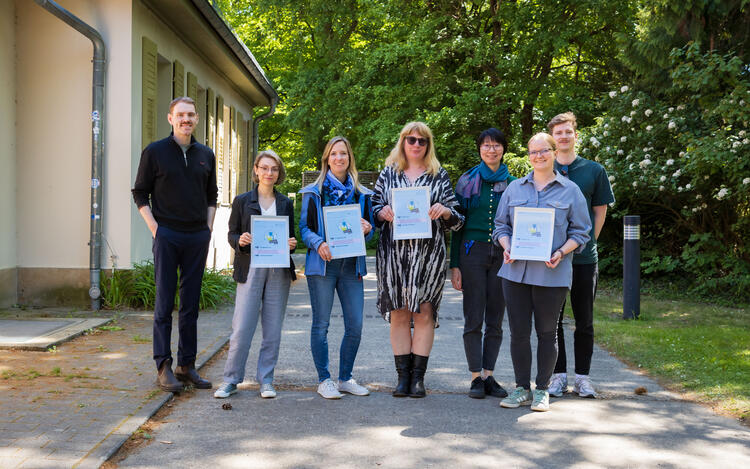
From reducing freezer usage to plastic waste, Max Delbrück Center labs have been implementing strategies from the LEAF program for sustainable research. As more labs join the program, they are not only contributing to reaching our sustainability goals, they are also improving research quality.
Consuming 5 to 10 time more energy per square meter than standard office spaces, biomedical research labs have a substantial carbon footprint. Equipment like −80 degree C freezers use as much energy per year as a small German household, according to a 2023 study published in PLOS. Additionally, bioscience research is responsible for nearly 2% of global plastic waste.
The Max Delbrück Center is no exception. We produce the equivalent of about 20,000 tons of CO2 each year – by working here, one is effectively doubling their CO2 footprint. But under Sustainability Officer Christian Panetzky and his predecessor Dr. Michael Hinz, we have started to implement several measures to reduce our energy consumption. Our goal is to become greenhouse gas neutral by 2038.
Making our labs greener
Among these measures is compliance with the Laboratory Efficiency Assessment Framework (LEAF), a sustainability initiative developed by University College London aimed at enhancing laboratory environmental performance. LEAF offers an online platform to guide labs through actions that focus on consuming less energy and water and reducing plastic waste. Laboratories anywhere can achieve Bronze, Silver or Gold certifications based on the number and complexity of sustainability actions they implement.
This year, the first four of our labs attained Bronze: Sander, Poulet, and both Rajewsky labs. “Bronze is about taking small steps to get used to certain practices,” says Dr. Alexis Shih in the Pancreatic Organoid Research and Disease Modeling lab of Professor Maike Sander. The lab for example, and cleaned out its sample inventory and as a result, was able to decommission three refrigerator/freezers. The Poulet lab was also able to reduce its energy use by sharing freezers with other labs. And since 2024, all labs have actually adjusted their ultra-low freezer temperature to -70 degrees C, because they had found that a 10 degree difference did not affect performance.
“Many of the actions involve looking at what equipment uses a lot of energy and trying to find ways to reduce the impact,” Shih adds. Data storage, for example, also consumes a lot of energy. Shih now tries to backup only data that is absolutely necessary and avoids duplicating files. Many labs have also implemented other sustainability actions tailored to their specific work, such as choosing to purchase sterile pipette tips that are packaged in boxes that can be partially recycled.
Reducing environmental impact isn’t the only benefit of LEAF. One task on the Bronze certification list, for example, requires labs to do periodic checks of all instruments and reagents to ensure they are adequately calibrated and labeled and that none are expired. Experiments that fail because of avoidable mistakes use a lot of resources, Shih adds, because they must be repeated. “Any researcher would want to ensure the quality and reproducibility of their research. It’ just good science.”
Tools and changing people’s mindset
To calculate energy usage and plastic waste, the LEAF platform offers online calculators. But Katrin de la Rosa's team, led by Lisa Spatt and Mikhail Lebedin, have taken the exercise even further. They measured the energy consumption of every device equipped with a standard plug in their lab. To their surprise, they found that the 230V devices alone consume well over 220 kWh per week – the same amount of energy required to fully charge two Teslas. This value does not include the largest energy consumers such as ultra-low temperature freezers and building services equipment.
In fact, ventilation systems usually account for the largest chunk of a lab’s energy use. That’s because many Max Delbrück Center labs exchange air eight times an hour as part of a safety feature. The certified labs in our more modern facilities, however, can control the air exchange manually, which ensures the highest setting is used only when necessary. This is especially important during weekends, when the labs are largely empty.
But perhaps the biggest change wrought by the program is in the way that people think. The Poulet lab, for example, uses isoflurane gas to anesthetize research animals. Isoflurane is also a potent greenhouse gas. With some investigation, Dr. Svenja Steinfelder, Lab Manager in the Poulet lab, figured out a way to return excess gas collected in a filter system back to the supplier. It can then be reprocessed into new isoflurane gas. While this measure is not part of LEAF certification, the process of going through the LEAF check list has made her think about all the additional ways the lab can conserve resources, she says.
“Achieving Bronze does not take a lot of effort,” adds Steinfelder. “Much of the focus is on raising people’s awareness of our energy usage and to get people thinking about ways to conserve.”
Expanding LEAF to other labs
“The Bronze tier is a brilliant way to get our lab teams thinking about the impact of their day-to-day work and where they can optimize – without piling extra work on anyone,” says Panetzky. “Frankly, every one of our labs could hit Bronze with very little effort.”
By the end of 2026, Panetzky and his team would like at least half of all Max Delbrück Center labs certified Bronze. To achieve that goal, Panetzky’s team will approach labs systematically and encourage them to join LEAF. At the Summer Science Day on July 3, as well as at the quarterly Sustainability Ambassadors meeting, to which each lab and department is requested to send a delegate, results will be showcased.
Although there are currently no plans to make LEAF compliance mandatory in Germany, labs applying for international grants will quickly notice that funding institutions such as Cancer Research U.K. and the Wellcome Trust among others, now require a green-lab certificate just to submit an application, Panetzky notes.
Going for Gold
All labs should of course aspire to Silver or Gold LEAF status, Panetzky says, which are more demanding. Labs are required to implement best practices for using fume hoods and safety cabinets, check the energy efficiency of software code, or cut and reuse consumables even further, among other measures.
“Getting all labs on board will take real initiative and more time,” he adds. “This is a long-term goal and perhaps we can encourage it by rewarding the extra effort. Letting labs keep a share of any energy and resource savings they generate could be the way to go. Incentives like that turn sustainability into a win-win for science and the budget.”
Text: Gunjan Sinha
Further information
- Sustainable Development at the Max Delbrück Center
- Driving sustainable transformation by Christian Panetzky
- Greening the lab
- Interview with former Sustainability Officer Michael Hinz
Research / 01.07.2025
Maike Sander elected member of EMBO

The European Molecular Biology Organization has elected Scientific Director of the Max Delbrück Center Maike Sander to its membership. She will join a community of more than 2,100 leading life scientists who guide the organization and help shape the future of life science research.
Professor Maike Sander, Scientific Director of the Max Delbrück Center and Vice President of Helmholtz Health, has been elected member of the European Molecular Biology Organization (EMBO) – one of the largest molecular biology organizations in Europe. She is one of 69 new EMBO Members and Associate Members who have been selected this year for their outstanding achievements in the life sciences.
EMBO members are nominated and elected by existing members. Among other tasks, members guide and support EMBO activities. They evaluate funding applications, serve on EMBO Council and committees, or join the editorial boards of EMBO Press journals. Members also help shape the direction of life science research, support early-career scientists, and strengthen research communities.
“It’s an honor to join the EMBO community, whose members have shaped breakthroughs in the life sciences. I look forward to contributing to the EMBO mission and advancing research that improves human health,” says Sander.
The new members will be formally welcomed at the next EMBO Members’ Meeting in Heidelberg, Germany, on 22-24 October 2025.
Leading the charge against diabetes
Sander’s research has focused on uncovering the molecular mechanisms that govern how insulin producing beta cells form and function. Her aim is to develop novel therapies to treat diabetes.
Beta cells are located inside islets, cell clusters in the pancreas that house several different types of hormone-secreting cells. She and her team have developed approaches to grow islet cell organoids from human pluripotent stem cells, which they use to study why beta cells become dysfunctional in diabetes. They modify the organoids to mimic different conditions and use single-cell genomics and other tools to chart the molecular signals that cue cells to produce insulin – and to understand what disrupts this process in disease.
Her lab recently developed an organoid model of stem cell-derived pancreatic islets with integrated vasculature, which more closely resembles the native environment of beta cells in the human body. Further research aims to improve this model even more. By using microfluidic chips to expose organoids to immune cells, she aims to better understand how immune cells destroy beta cells in Type 1 diabetes. Uncovering how beta cells are destroyed in Type 1 diabetes – and why they stop making insulin in Type 2 diabetes – she hopes will lead to better diabetes treatments.
Professor Maike Sander is Scientific Director of the Max Delbrück Center and Vice President of Helmholtz Health. She is an elected member of the German National Academy of Sciences Leopoldina, the Association of American Physicians, and the American Society of Clinical Investigation. She is a recipient of the Grodsky Award of the Juvenile Diabetes Research Foundation, the Alexander von Humboldt Foundation Research Award, and the 2022 Albert Renold Prize by the European Society for the Study of Diabetes.
Further information:
Sander Lab
First vascularized model of stem cell islet cells
Profile of Maike Sander
EMBO press release (with all new 2025 members)
Research, Innovation, Patient care / 26.06.2025
Biomedical innovation in Berlin gets €30 million boost
The Helmholtz Association has approved €30.8 million in funding for the Center for AI–Accelerated Molecular Innovations in Medicine to be located at the Max Delbrück Center. Researchers will use new technologies to develop AI-driven strategies for precision treatment and prevention.
In an ageing society, extending health-span will require not only treating illness, but also stopping disease before it starts. Such precision prevention will require a detailed understanding of the molecular and cellular changes that unfold as a person’s health gradually transitions into disease. To gain such insight, researchers must generate and analyze vast molecular and clinical data from both healthy individuals and patients. Advanced AI models will be essential to uncover patterns and mechanisms within these complex data. These insights will drive new tools, diagnostics, and therapies – advancing precision medicine to prevent disease even before symptoms appear.
The Center for AI-Accelerated Molecular Innovations in Medicine (AI2M) will help turn this vision into reality. Backed by €30.8 million in funding from the Helmholtz Association for construction and equipment, AI2M is set to break ground in 2026. The center will be located at two strategic hubs in Berlin – Mitte and Buch. Construction of the Spatial and Single-cell Biomedicine and AI hub at the Berlin Institute for Medical Systems Biology in Mitte is scheduled to be completed by 2029, with the Human Cell Model and Bioengineering hub in Buch following in 2033.
“As medicine shifts from reactive to predictive, innovation hubs like AI2M will play a pivotal role in transforming medical care – making earlier, more personalized, and more effective interventions not only possible, but a part of everyday healthcare,” says Professor Maike Sander, Scientific Director of the Max Delbrück Center and Vice President of Helmholtz Health.
Combining technology and expertise
At both hubs, researchers will work in interdisciplinary teams that will include academic medical centers and industry partners. Taking advantage of large population studies that are collecting vast amounts of data from volunteers, AI2M researchers will harness the power of AI to mine these datasets to discover biomarkers that signal disease before clinical symptoms appear, or to develop new targeted therapies.
Max Delbrück Center scientists are at the forefront of developing the technologies that AI2M will bring to bear in medical innovation. For example, the laboratories of Professor Nikolaus Rajewsky, Dr. Ashley Sanders, and Dr. Fabian Coscia have shown that single-cell and spatial multi-omic approaches can map disease progression with unprecedented resolution. Drs. Jakob Metzger, Mina Gouti, and Sebastian Diecke have pioneered high-throughput, screening platforms that use organoids grown from individual patients’ cells as models — enabling researchers to precisely map disease trajectories and test personalized therapies.
In Berlin, the Charité Universitätsmedizin Berlin and the Berlin Institute of Health at Charité will serve as key local partners to help accelerate the translation of laboratory-based medical innovations into clinical practice.
“Tackling today’s most pressing scientific challenges demands breaking down disciplinary silos. AI2M will create powerful new links between AI, engineering, biology, and medicine –enabling ideas to move more freely, technologies to converge, and diverse teams to collaborate seamlessly, says Dr. Stan Gorski, Head of Strategic Initiatives at the Max Delbrück Center. “Breakthroughs arise at the intersections.”
Text: Gunjan Sinha
Source: Press Release Max Delbrück Center
Biomedical innovation in Berlin gets €30 million boost
Research, Innovation, Patient care, Education / 18.06.2025
Students from Freie Universität Berlin visited the Campus Berlin-Buch

Visiting the Campus Berlin-Buch: Master's students in Biology at Freie Universität Berlin learned about career opportunities and start-ups at the BiotechPark Berlin-Buch on June 11, 2025.
During a tour of the campus with Campus Manager Dr. Ulrich Scheller, they were first given an overview of the closely cooperating research institutions and biotech companies as well as the location of future innovation Berlin-Buch, whose profile focuses on biomedicine and health.
Dr. Uwe Lohmeier, Head of the Berlin BioScience Academy, and Trendelina Rrustemi, Senior Scientist at Alithea Biotechnology GmbH, gave an insight into their career paths at the Career Panel Talk in the BerlinBioCube start-up center building. Dr. Lohmeier explained the development opportunities offered by the Berlin BioScience Academy (BBA).
Trendelin Rrustemi presented her start-up Alithea Biotechnology GmbH. It offers pioneering HLA peptide characterization with innovative immunopeptidomics, highly sensitive mass spectrometry and applied AI.
The students were then given an insight into the start-ups CUTANEON - Skin & Hair Innovations GmbH, Cultimate Foods GmbH and FyoniBio GmbH
The BiotechPark on the Campus Berlin-Buch is one of the leading technology parks in Germany. Buch has been renowned for its clinics and cutting-edge research for around 100 years and is now one of the largest biomedical locations in Germany.
The Berlin BioScience Academy (BBA), formerly known as "Gläsernes Labor Akademie (GLA)", supports young scientists throughout Germany in their professional orientation and entry into the pharmaceutical and biotechnology industry.
www.glaesernes-labor-akademie.de
Research, Innovation, Patient care / 16.06.2025
Berlin-Buch goes Boston

At BIO 2025, June 16-19 in Boston, Campus Berlin-Buch GmbH will be showcasing the location of future innovation Berlin-Buch
The BIO International Convention is the largest and most comprehensive event for biotechnology, representing the entire biotechnology scene with 20,000 industry leaders from across the globe.
Meet our Managing Director, Dr. Christina Quensel, in the German Pavilion and find out more about our innovation location. Excellent biomedical research and one of the largest biotech parks in Germany characterize the science and technology campus Berlin-Buch. It is a vibrant ecosystem - from innovations from cutting-edge research to new marketable therapies that find their way into application. Campus Berlin-Buch offers start-ups and companies from the biotech and medtech sectors state-of-the-art laboratory and office space on a gross floor area (GFA) of around 45,000 m². For start-ups, the campus offers attractive, subsidized lab and office space in the BerlinBioCube start-up center. The inspiring life science community on site enables direct exchange and joint projects.
We look forward to discussing with you how we are shaping the future of biotechnology. You will find us at booth number 2865. See you there!
Create the future of medicine in Berlin!
Innovation / 06.06.2025
Eckert & Ziegler: Illuccix® PSMA-PET Imaging Agent Receives Approval in Germany
Eckert & Ziegler (ISIN DE0005659700, SDAX) congratulates Telix Pharmaceuticals Limited (Telix) on the approval of its prostate cancer PET imaging agent, Illuccix® (kit for the preparation of gallium-68 gozetotide injection) in Germany, where Eckert & Ziegler Radiopharma GmbH is the official distributor.
With Illuccix®, Eckert & Ziegler will now significantly extend its portfolio in nuclear medicine with a widely clinically validated PSMA tracer, which perfectly complements its proprietary 68Ge/68Ga Radionuclide Generator, GalliaPharm®. GalliaPharm® is widely used as a high-quality GMP grade generator for Gallium-68 in Germany and globally, supporting the production of radiopharmaceuticals for positron emission tomography (PET) imaging, particularly in oncology.
"Our collaboration with Telix on Illuccix® leverages our established distribution network and market expertise to ensure broad access to this important PSMA-PET imaging agent in Germany. This partnership reinforces our commitment to delivering advanced diagnostic solutions for prostate cancer care", commented Dr. Harald Hasselmann, CEO of Eckert & Ziegler SE.
Raphaël Ortiz, Chief Executive Officer, Telix International added: “We are pleased that Illuccix®, which has played a key role in the advancement of PSMA-PET imaging internationally, has been approved in Germany. We are looking forward to working with Eckert & Ziegler to make our gallium-based PSMA-PET imaging agent accessible here.”
About Eckert & Ziegler
Eckert & Ziegler SE, with more than 1,000 employees, is a leading specialist in isotope-related components for nuclear medicine and radiation therapy. The company offers a broad range of services and products for the radiopharmaceutical industry, from early development work to contract manufacturing and distribution. Eckert & Ziegler shares (ISIN DE0005659700) are listed in the TecDAX index of Deutsche Börse.
Source: Press Release Eckert & Ziegler
Eckert & Ziegler: Illuccix® PSMA-PET Imaging Agent Receives Approval in Germany
Research / 31.05.2025
Joint Berlin Data & AI Center planned
Data-driven research is crucial for tackling societal challenges. In a collaboration that is so far unique, Berlin's Universities of Excellence, the Max Delbrück Center, and the Helmholtz-Zentrum Berlin, together with the Zuse Institute Berlin, aim to establish a powerful Data and AI Center.
The Helmholtz-Zentrum Berlin for Materials and Energy (HZB), the Max Delbrück Center for Molecular Medicine in the Helmholtz Association, Berlin's Universities of Excellence including Charité – Universitätsmedizin, and the Zuse Institute Berlin (ZIB) recently signed a joint declaration of intent for this purpose. The goal is a flagship project of outstanding importance for the future of Berlin as a research hub.
The partners aim to create a regionally anchored and internationally competitive infrastructure that enables high-performance, cross-institutional, data-driven cutting-edge research. It will effectively complement the national high-performance infrastructure at the ZIB. The partners agree that complex scientific simulations and the use of artificial intelligence in particular require new, high-performance data infrastructures. Joint planning and use of resources represents a particularly sustainable approach.
A high-performance data center
As a first step, a new high-performance research Data Center is to be built at the HZB site in Berlin-Adlershof in cooperation with the ZIB. The HZB and ZIB have been engaged in intensive planning for the past year and aim to implement the first phase of the data center as quickly as possible. In the long term, computing capacity is to be expanded to up to 5 megawatts through new construction.
In the next phase, the partners will jointly explore potential funding models, administrative structures, and usage scenarios. These will be incorporated into a detailed cooperation agreement to ensure long-term, cross-institutional access to and operation of the Data Center.
Karsten Häcker, Chief Information Officer (CIO) at the Max Delbrück Center, emphasizes that the Berlin science network BRAIN is a crucial component for the technical implementation. After all, the fiber optic network financed by the Berlin Senate connects all the locations of scientific institutions in Berlin. “We are very much looking forward to working together,” he says. “In this project, we are collaborating even more closely with the ZUSE Institute and, for the first time, with the data center infrastructures of the other institutions.”
Further information
Innovation / 30.05.2025
Eckert & Ziegler Organizes Third Boston Radionuclide Theranostics Forum
BOSTON, Mass., 30 May 2025. Eckert & Ziegler successfully completes the 3rd annual Boston Radionuclide Theranostics Forum, underscoring its continued leadership in the radiopharmaceutical industry. Building upon the success of the previous editions, this year's event gathered around 100 decision makers, renowned experts, key partners, and influential industry leaders to explore the transformative potential of radionuclides in precision oncology.
Held on May 29, 2025, the Forum focused on the central question whether radionuclide theranostics is coming of age discussing its potential and recent successes as a transformative force in precision oncology. Through insightful panel discussions and expert-led presentations, participants examined advancements in radiopharmaceuticals and supply chain questions as well as challenges in clinical development. Another key discussion focused on deal stories in the radiotherapeutic field. The full 2025 agenda is available here.
“The rapid growth and innovation in the radiopharmaceutical market are undeniable,” said Dr. Harald Hasselmann, CEO of Eckert & Ziegler SE. “Organizing the third edition of the Boston Radionuclide Theranostics Forum reinforces our commitment to advancing precision oncology. The discussions and collaborations emerging from this platform have the potential to accelerate progress and expand patient access to life-changing therapies.”
The Boston Radionuclide Theranostics Forum is initiated and created by Eckert & Ziegler, sponsored by Solomon Partners, hosted by Morrison Foerster and organized with the support of the German American Business Council of Boston. It has established itself as a premier event on the nuclear medicine calendar. The half-day gathering featured insights from over a dozen international experts representing clinical practice, industry innovation, and cutting-edge research. With engaging dialogue and strategic networking opportunities, the Forum continues to serve as a vital platform for shaping the future of radiotheranostics.
The event was held by invitation only and once again achieved full attendance, reflecting the strong interest and commitment of the global radiopharmaceutical community. The next edition of the Forum is scheduled for May 28, 2026, as Eckert & Ziegler remains dedicated to fostering collaboration and driving innovation in precision oncology worldwide.
About Eckert & Ziegler
Eckert & Ziegler SE, with more than 1,000 employees, is a leading specialist in isotope-related components for nuclear medicine and radiation therapy. The company offers a broad range of services and products for the radiopharmaceutical industry, from early development work to contract manufacturing and distribution. Eckert & Ziegler shares (ISIN DE0005659700) are listed in the TecDAX index of Deutsche Börse.
Contributing to saving lives
Research / 26.05.2025
First vascularized model of stem cell islet cells

Researchers led by Maike Sander, Scientific Director of the Max Delbrück Center, have developed a vascularized organoid model of hormone secreting cells in the pancreas. The advance, published in “Developmental Cell,” promises to improve diabetes research and cell-based therapies.
An international team of researchers led by Max Delbrück Center Scientific Director Professor Maike Sander has for the first time developed an organoid model of human pluripotent stem cell-derived pancreatic islets (SC-islets) with integrated vasculature. Islets are cell clusters in the pancreas that house several different types of hormone-secreting cells, including insulin-producing beta cells. Researchers in the Sander lab at the University of California, San Diego, found that SC-islet organoids with blood vessels contained greater numbers of mature beta cells and secreted more insulin than their non-vascularized counterparts. The vascularized organoids more closely mimicked islet cells found in the body. The study was published in “Developmental Cell.”
“Our results highlight the importance of a vascular network in supporting pancreatic islet cell function,” says Sander. “This model brings us closer to replicating the natural environment of the pancreas, which is essential for studying diabetes and developing new treatments.”
Engineering vascularized stem cell islets
SC-islet cell organoids – mini-organs that mirror the insulin producing cell clusters outside the body – are widely used to study diabetes and other pancreatic endocrine diseases. But beta cells in these organoids are typically immature, making them suboptimal models for the in-vivo environment, says Sander. Although several approaches have been developed to promote beta cell maturation, their effects have been modest, she adds.
To better mimic the in-vivo environment, the researchers added human endothelial cells, which line blood vessels, and fibroblasts, cells that help form connective tissue, to islet organoids grown from stem cells. The team experimented with different cell culture media until they found a cocktail that worked. The cells not only survived, but matured and grew a network of tube-like blood vessels that engulfed and penetrated the SC-islets.
“Our breakthrough was devising the recipe,” Sander says. “It took five years of experimenting with various conditions, involving a dedicated team of stem cell biologists and bioengineers.”
Vascularized stem cell islet organoids are more mature
When the researchers compared vascularized organoids to non-vascularized organoids, they found the former secreted more insulin when exposed to high levels of glucose. “Immature beta cells don’t respond well to glucose. This told us that the vascularized model contained more mature cells,” says Sander.
The researchers next wanted to explore how specifically vasculature helps organoids to mature. They found two key mechanisms: Endothelial cells and fibroblasts help build the extracellular matrix – a web of proteins and carbohydrates at cell surfaces. The formation of the matrix itself is a cue that signals cells to mature. Secondly, endothelial cells secrete Bone Morphogenetic Protein (BMP), which in turn stimulates beta cells to mature.
Recognizing that mechanical forces also stimulate insulin secretion, the team then integrated the organoids into microfluidic devices, allowing nutrient medium to be pumped directly through their vascular networks. They found that the proportion of mature beta cells increased even further.
“We found a gradient,” says Sander. “Non-vascularized organoids had the most immature cells, a greater proportion matured with vascularization, and even more matured by adding nutrient flow through blood vessels. A human cell model of pancreatic islets that closely replicates in-vivo physiology opens up novel avenues for investigating the underlying mechanisms of diabetes,” she adds.
In a final step, the researchers showed that vascularized SC-islets also secrete more insulin in-vivo. Diabetic mice grafted with non-vascularized SC-islets fared poorly compared to those grafted with vascularized SC-islet cells, with some mice showing no signs of the disease at 19-weeks post-transplant. The research supports other studies that have shown that pre-vascularization improves the function of transplanted SC-islets.
A better model to study Type 1 diabetes
Sander now plans to use vascularized SC-islet organoid models to study Type-1 diabetes, which is caused by immune cells attacking and destroying beta cells in the pancreas – in contrast to Type-2 in which the pancreas produces less insulin over time and the body’s cells become resistant to the effects of insulin.
She and her team at the Max Delbrück Center are growing vascularized organoids from the cells of patients with Type-1 diabetes. They are transferring the organoids onto microfluidic chips and adding patients’ immune cells. “We want to understand how the immune cells destroy beta cells,” Sander explains. “Our approach provides a more realistic model of islet cell function and could help develop better treatments in the future.”
Text: Gunjan Sinha
Picture: Researchers have devised the right conditions to grow vascularized stem cell islets. The image shows vasculature (red) tightly wrapped around insulin-producing cells (green) in the islets (blue). © Sander lab
Further information
Sander Lab
Pancreatic Organoid Research and Disease Modeling
The innovator: Profile of Maike Sander
Literature
Yesl Jun, Kim Vy, et al. (2025): “Engineered vasculature induces functional maturation of pluripotent stem cell-derived islet organoids.” Developmental Cell. DOI: 10.1016/j.devcel.2025.04.024
Innovation / 23.05.2025
Eckert & Ziegler Wins “Best Managed Companies Award” for the Second Time
Eckert & Ziegler SE (ISIN DE0005659700) has once again been honored with the “Best Managed Companies Award”. The award, presented by Deloitte Private, UBS, the Frankfurter Allgemeine Zeitung and the Federation of German Industries (BDI), recognize excellently managed medium-sized companies throughout Germany. Eckert & Ziegler has now received this coveted award the second time.
The award is the result of a comprehensive, multi-stage application process in which companies are assessed for their excellence in the core areas of strategy, productivity and innovation, culture and commitment as well as finance and governance. A consistently high level of performance in all four categories is a prerequisite for selection. The final decision is made by an independent jury made up of renowned experts from business, science and the media.
“We are proud to once again receive the “Best Managed Companies Award,” says Dr. Harald Hasselmann, CEO of Eckert & Ziegler SE. " The award encourages us to continue expanding our leading position as a supplier of isotopes for nuclear medicine and measurement technology. I would like to thank our more than 1,000 employees worldwide who have contributed significantly to this success.”
“Strategic foresight and innovative strength are the key characteristics of a Best Managed Company such as Eckert & Ziegler. The award winners navigate the constantly changing market conditions with foresight, set trends in a dynamic environment, and shape the future with the necessary caution. Eckert & Ziegler demonstrates how companies in their region can make a significant contribution to development and open up new perspectives for the economy and society,” emphasizes Dr. Christine Wolter, Partner and Lead at Deloitte Private.
About Eckert & Ziegler.
Eckert & Ziegler SE with more than 1.000 employees, is a leading specialist for isotope-related components in nuclear medicine and radiation therapy. The company offers a broad range of services and products for the radiopharmaceutical industry, from early development work to contract manufacturing and distribution. Eckert & Ziegler shares (ISIN DE0005659700) are listed in the TecDAX index of Deutsche Börse.
Source: Pressemitteilung Eckert & Ziegler SE
Eckert & Ziegler Wins “Best Managed Companies Award” for the Second Time
Research / 02.05.2025
Towards understanding tumors in 3D

Researchers in Nikolaus Rajewsky’s lab at Max Delbrück Center combined high-resolution, single-cell spatial technologies to map a tumor’s cellular neighborhoods in 3D and identify potential targets for personalized cancer therapy. They describe their findings in two separate papers in “Cell Systems.”
Understanding not just what cells are present in a tumor, but where they are located and how they interact with other cells around them – their cellular neighborhoods – can provide detailed insights that help doctors determine which treatments or therapies might be most effective for a specific patient.
An international research team led by the Berlin Institute for Medical Systems Biology at the Max Delbrück Center (MDC-BIMSB) combined spatial transcriptomics in 3D and extracellular matrix imagining to gain unprecedented detail about the inner workings of an early-stage lung tumor. The proof-of-concept study was published in “Cell Systems”.
“Tumors are complex ecosystems where tumor cells live in close contact with the surrounding extracellular matrix. They interact with many other cell types,” says Professor Nikolaus Rajewsky, director of the MDC-BIMSB, head of the Systems Biology of Regulatory Elements lab and senior author on both papers. “The data we can obtain now in tumor tissues from a patient are becoming so precise and comprehensive that we can computationally predict the molecular mechanisms which are driving phenotypes. This is new and fundamentally important for making personalized medicine a reality.”
From 2D to 3D
Transcriptomics documents what RNA is being actively expressed in cells, which indicates the activities the cell is engaged in and reveals the cell types present in a sample. Spatial transcriptomics does this but for individual cells to build a 2D map. The team got early access to the CosMx instrument from the company NanoString, which does this at extremely high resolution – 1,000 different RNA molecules can be detected at one time, compared to traditional methods that identify just a handful of molecule types at once. The team analyzed 340,000 individual cells from the lung tumor, identifying 18 cell types.
The 3D analysis was powered by a new computational algorithm, STIM, which aligns datasets to reconstruct 3D virtual tissue blocks. “We realized that spatial transcriptomics datasets can be modeled as images,” says Dr. Nikos Karaiskos, a postdoctoral researcher in the Rajewsky lab and co-corresponding author of the second “Cell Systems” paper describing STIM in detail. Leveraging imaging techniques, STIM marries the fields of computer vision and spatial transcriptomics. The team worked closely with Dr. Stephan Preibisch, a former principal investigator at MDC-BIMSB who is now at Howard Hughes Medical Institute’s Janelia Research Campus in the U.S., to bring this collaborative effort to fruition.
They then worked with the Systems Biology Imaging Platform in Mitte to apply a separate imaging technique, called second harmonic generation, to map elastin and collagen in cellular neighborhoods, which in the lung are the main extracellular matrix constituents. Areas with more elastin were healthier, while those with more collagen surrounded the tumor cells, which indicates harmful tissue remodeling.
“So not only do we know what cell types are present, we know how they are grouped with their neighbors, and we could begin to understand how tumor cells rewire non-malignant cells at the tumor surface to support tumor growth,” explains Tancredi Massimo Pentimalli, MD, the first paper author who is pursuing a PhD in the Rajewsky Lab and the Berlin School of Integrative Oncology at Charité – Universitätsmedizin Berlin.
Cells talk
But the analysis did not stop there. The team was able to understand precise phenotypes – for example, if fibroblasts, which form connective tissue, were activated and remodeling the tissue or not. They were also able to listen in on cell-to-cell communication and determine how tumor cells were blocking immune cells from entering the tumor.
“This immune suppression mechanism is well-known and suggests immunotherapy would help,” Pentimalli says. “Immune checkpoint inhibitors would reverse the suppression and then you have this army of immune cells that are already in position ready to attack. It was exciting to see how our approach identified this dynamic and could help direct a personalized immunotherapy plan.”
Notably, these key insights were only possible with data in 3D – in 2D it was impossible to distinguish between the tumor and other immune cells embedded in the tumor surface.
Pathology 2.0
The beauty of this approach is that, while very high-tech, it starts with a routine tissue sample found in any pathology lab. For this study, the group used a tissue sample of a lung tumor that was several years old, preserved with formalin and embedded in paraffin wax – the standard method pathologists use to preserve archival tissues.
“We were able to extract all this wealth of molecular information from one very thin section of a sample that has been sitting around at room temperature for years,” Pentimalli says. “This is pathology 2.0 – not just looking at the cells under a microscope to make a diagnosis, but bringing molecular insight to the clinic.”
Next steps
Now that the proof-of-concept has been established, the team plans to apply the approach to larger datasets. They are currently working on 700 samples from 200 patients and collaborating with Dr. Fabian Coscia, who leads the Spatial Proteomics Lab at Max Delbrück Center, to integrate protein activity into the analysis.
Text: Laura Petersen
Illustration:
The image shows that the tumor core is surrounded by multiple immune niches in an early-stage non-small cell lung cancer (NSCLC) patient. Analyses of these multicellular niches using single-cell resolution spatial transcriptomics identified several druggable targets. Inhibition of these targets could have prevented tumor progression in this patient, who instead received conventional chemotherapy and succumbed to the disease one year later. © Rajewsky Lab, Max Delbrück Center
Source: Press Release Max Delbrück Center
Towards understanding tumors in 3D
- News
- Events
- MAGAZINE „buchinside“
- Press service/Download
-
News Archiv
- Archive News 2025
- Archive News 2024
- Archive News 2023
- Archive News 2022
- Archive News 2021
- Archive News 2020
- Archive News 2019
- Archive News 2018
- Archive News 2017
- Archive News 2016
- Archive News 2015
- Archive News 2014
- Archive News 2013
- Archive News 2012
- Archive News 2011
- Archive News 2010
- Archive News 2009
- Archive News 2008
